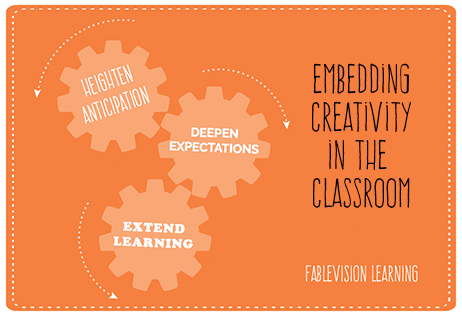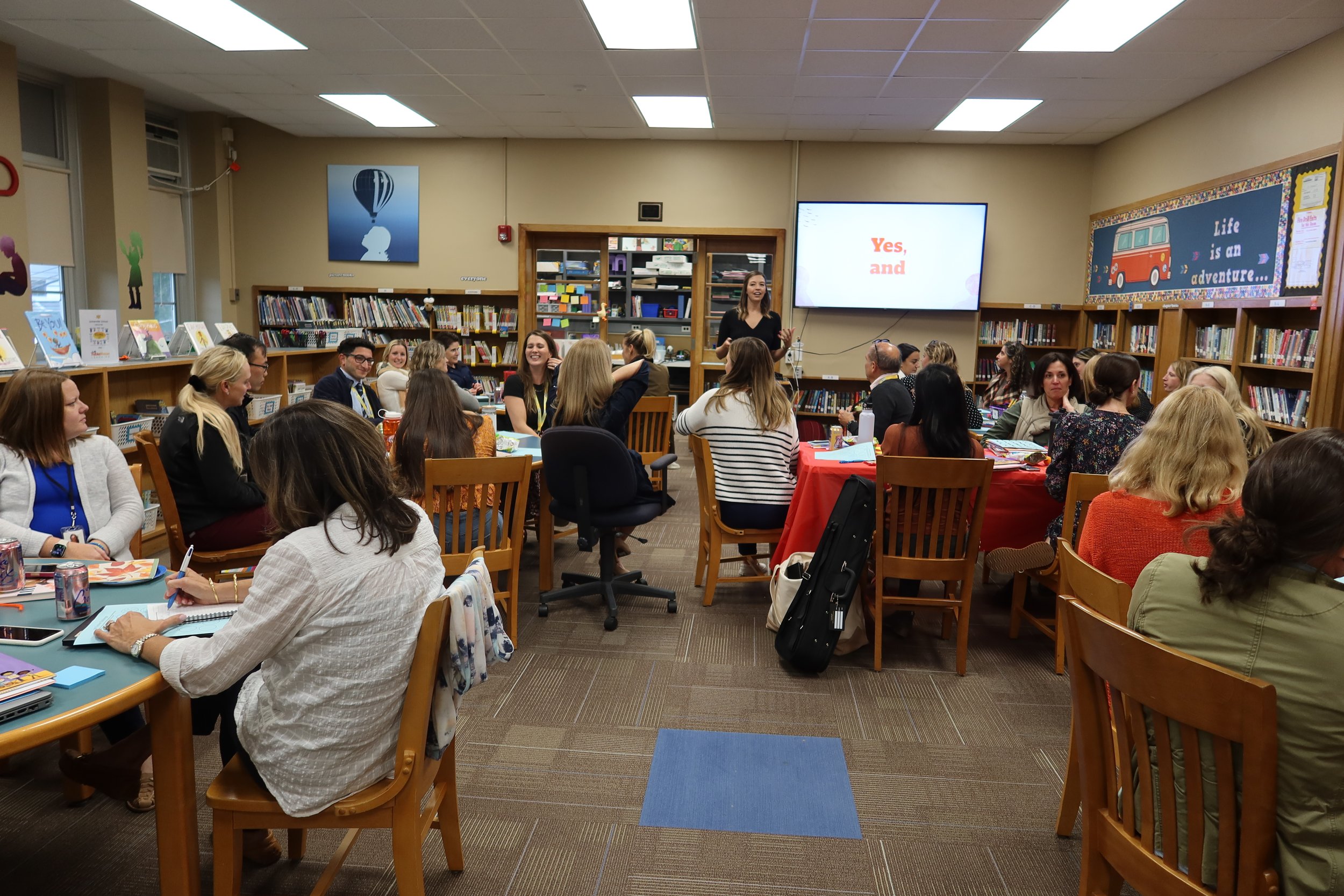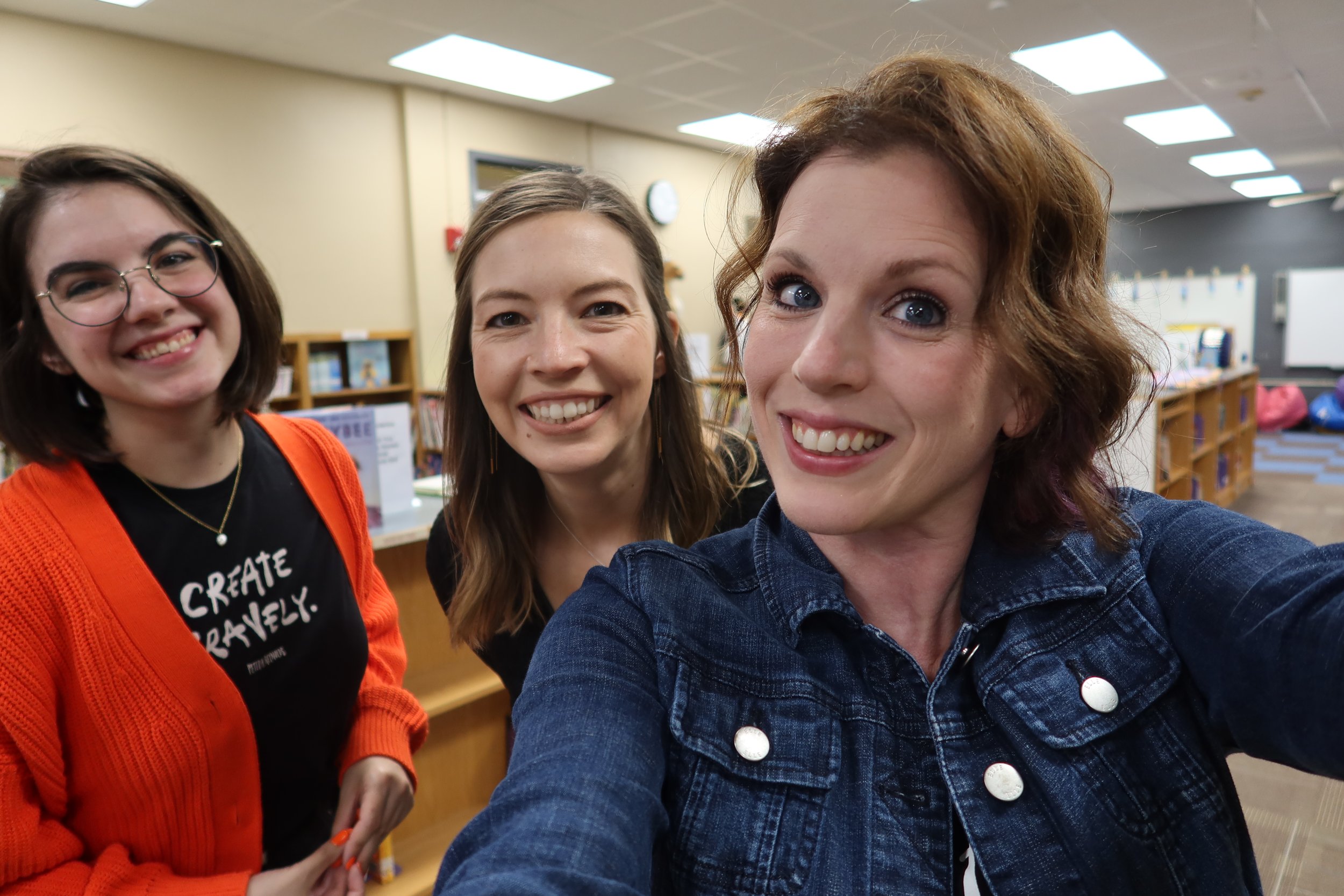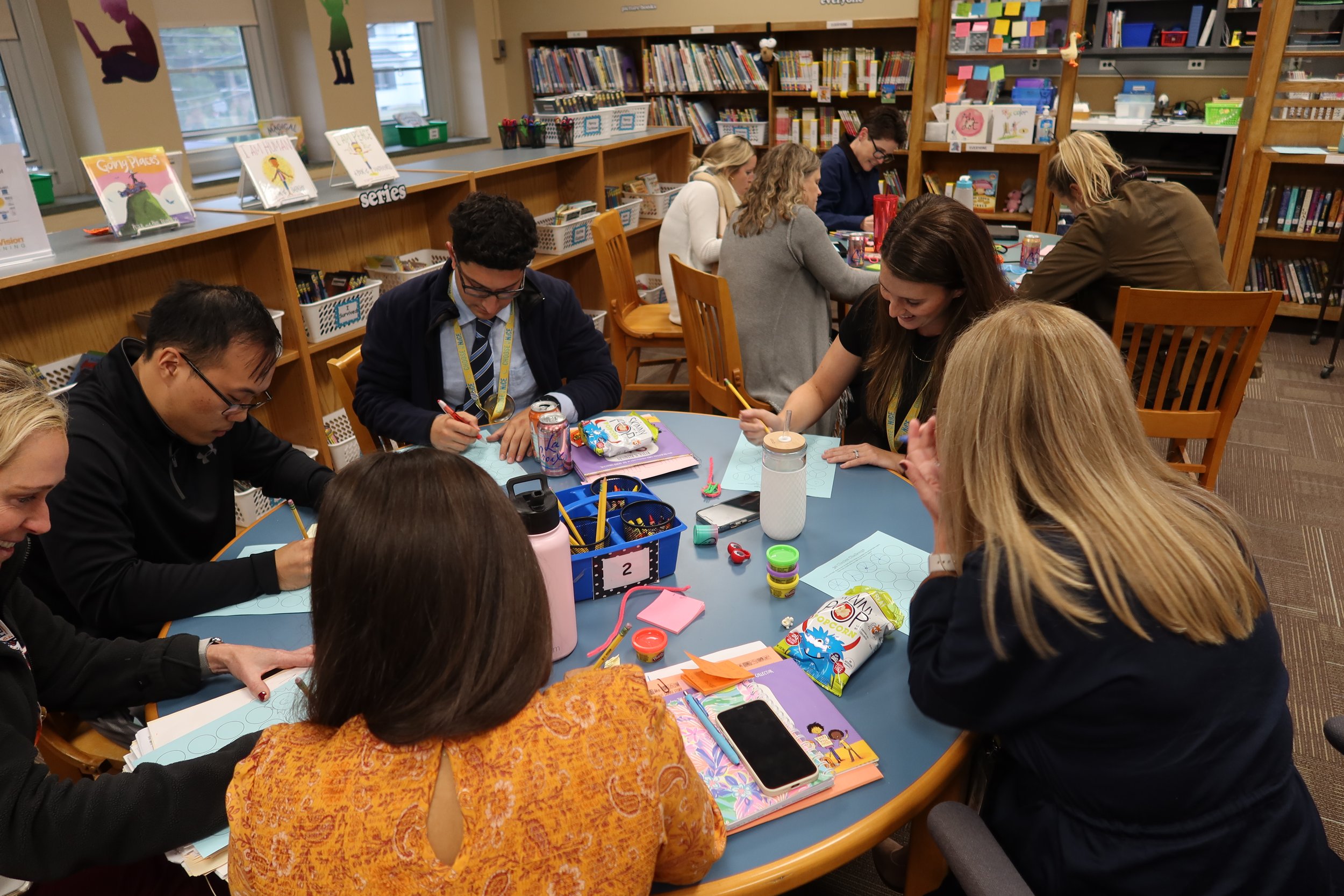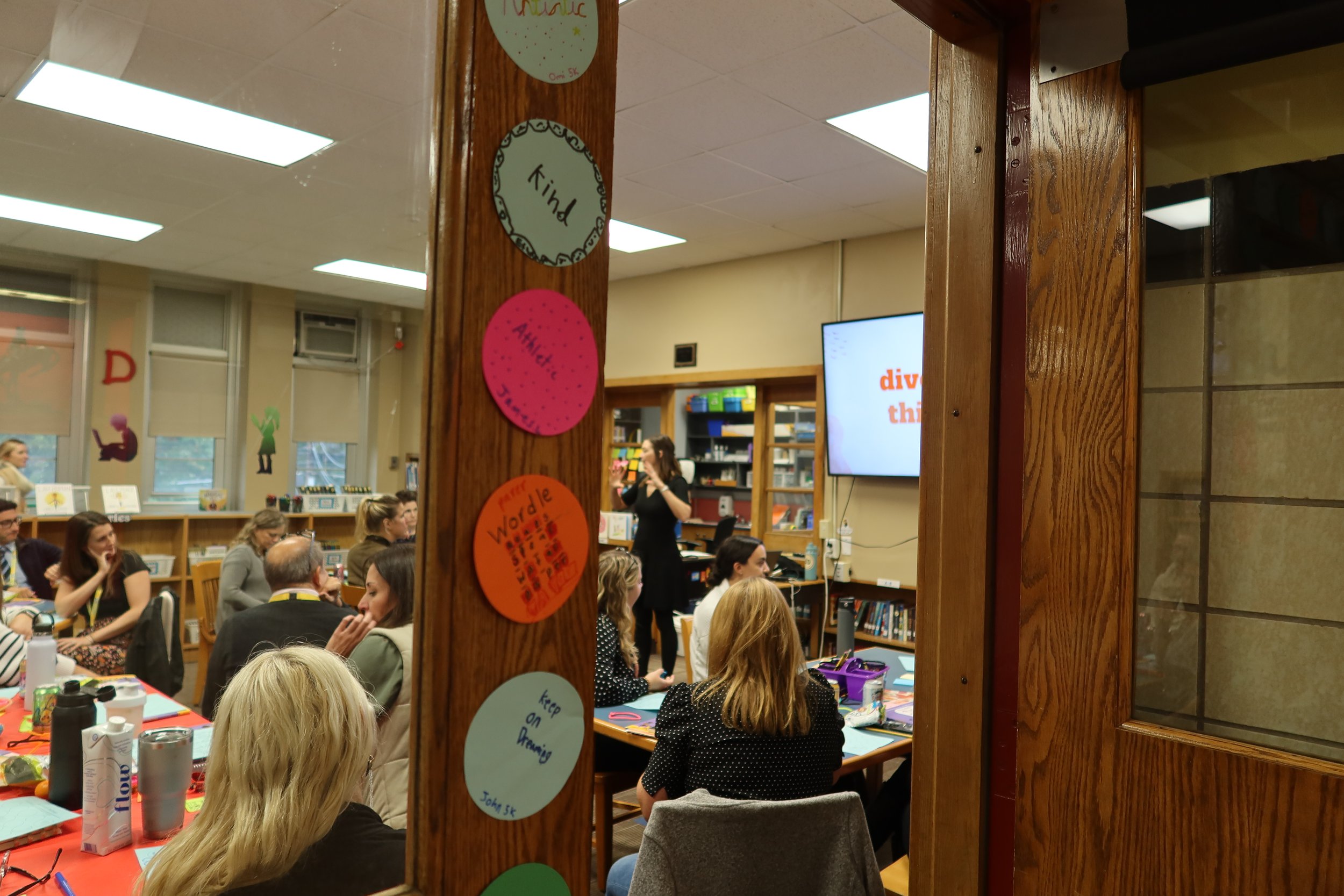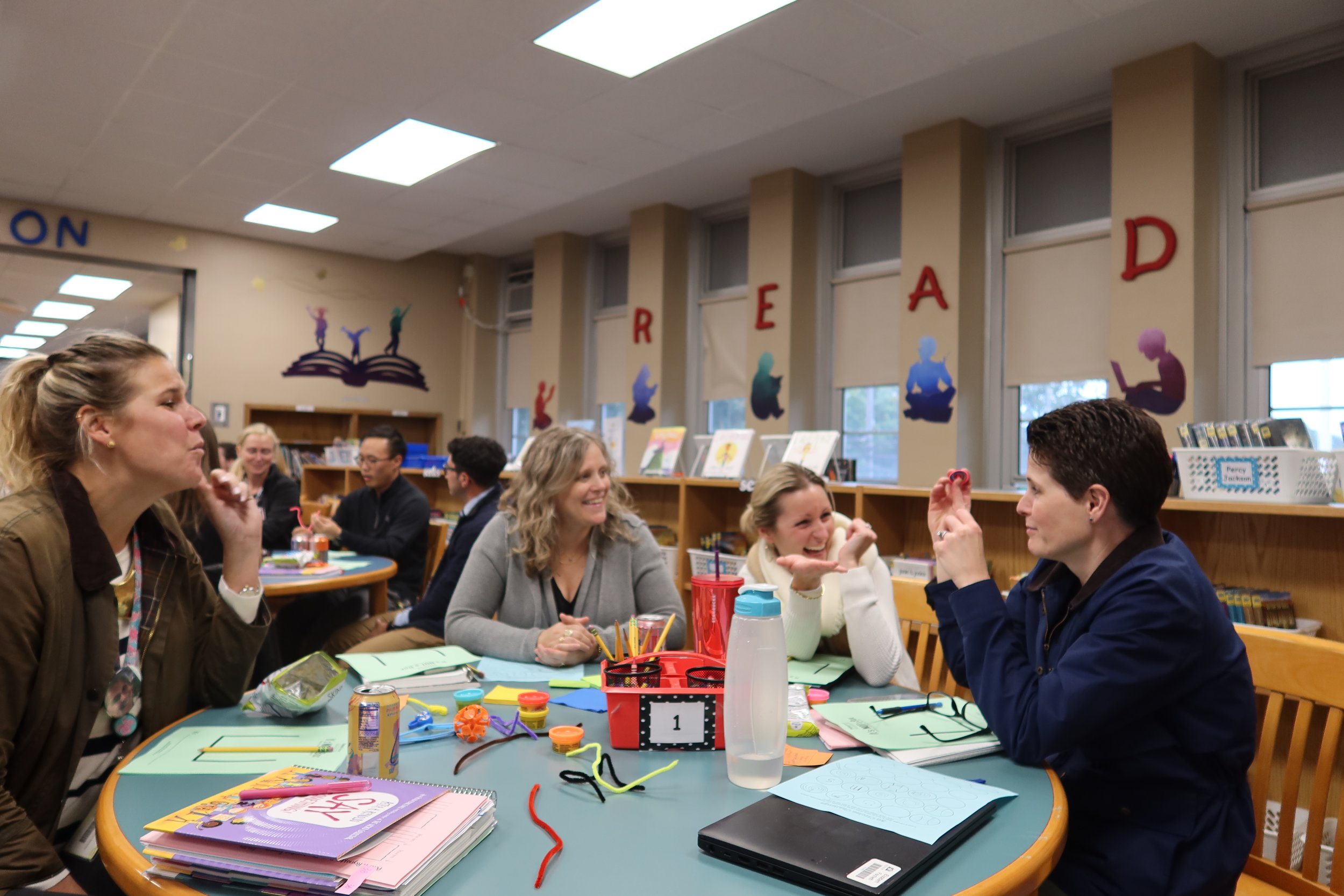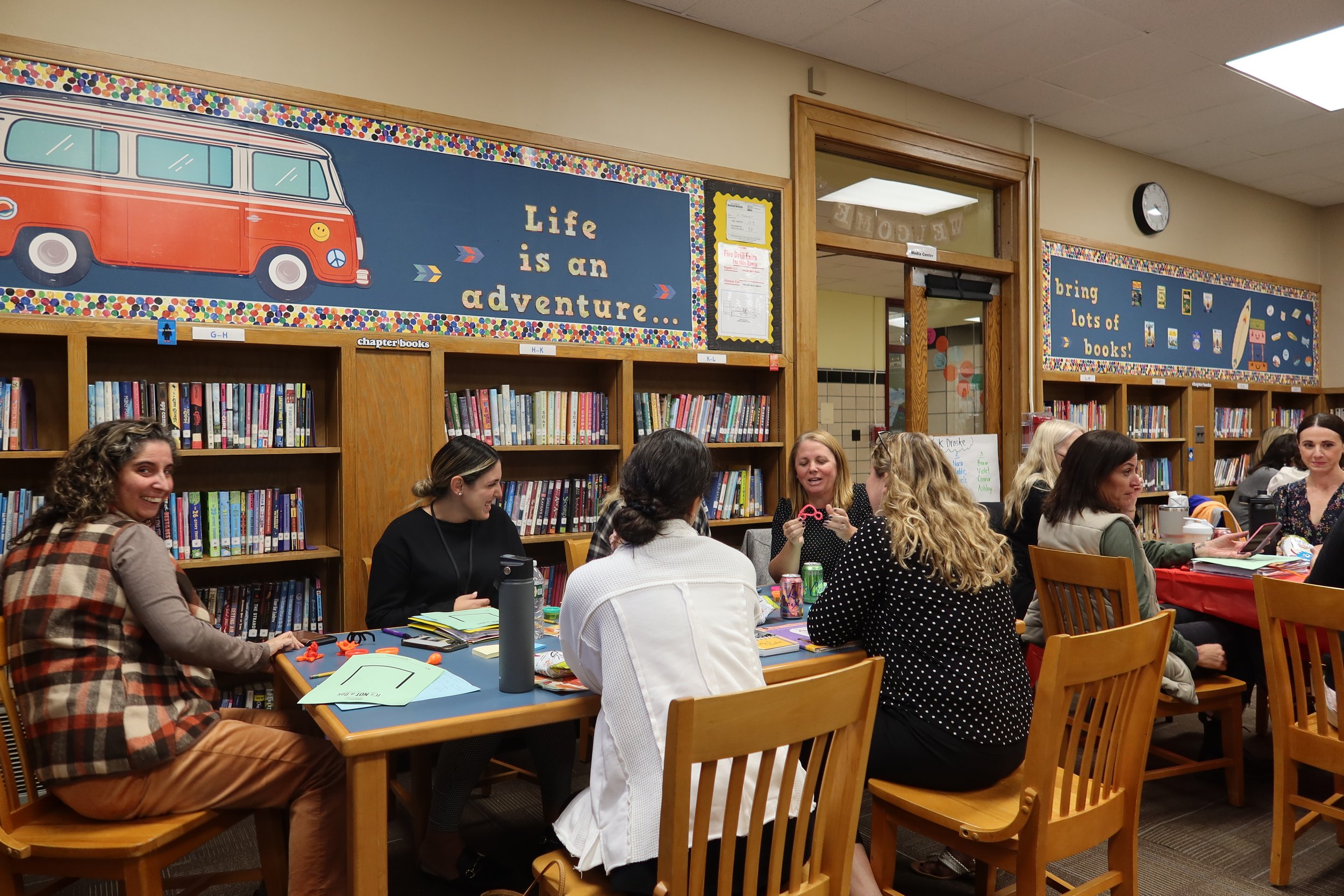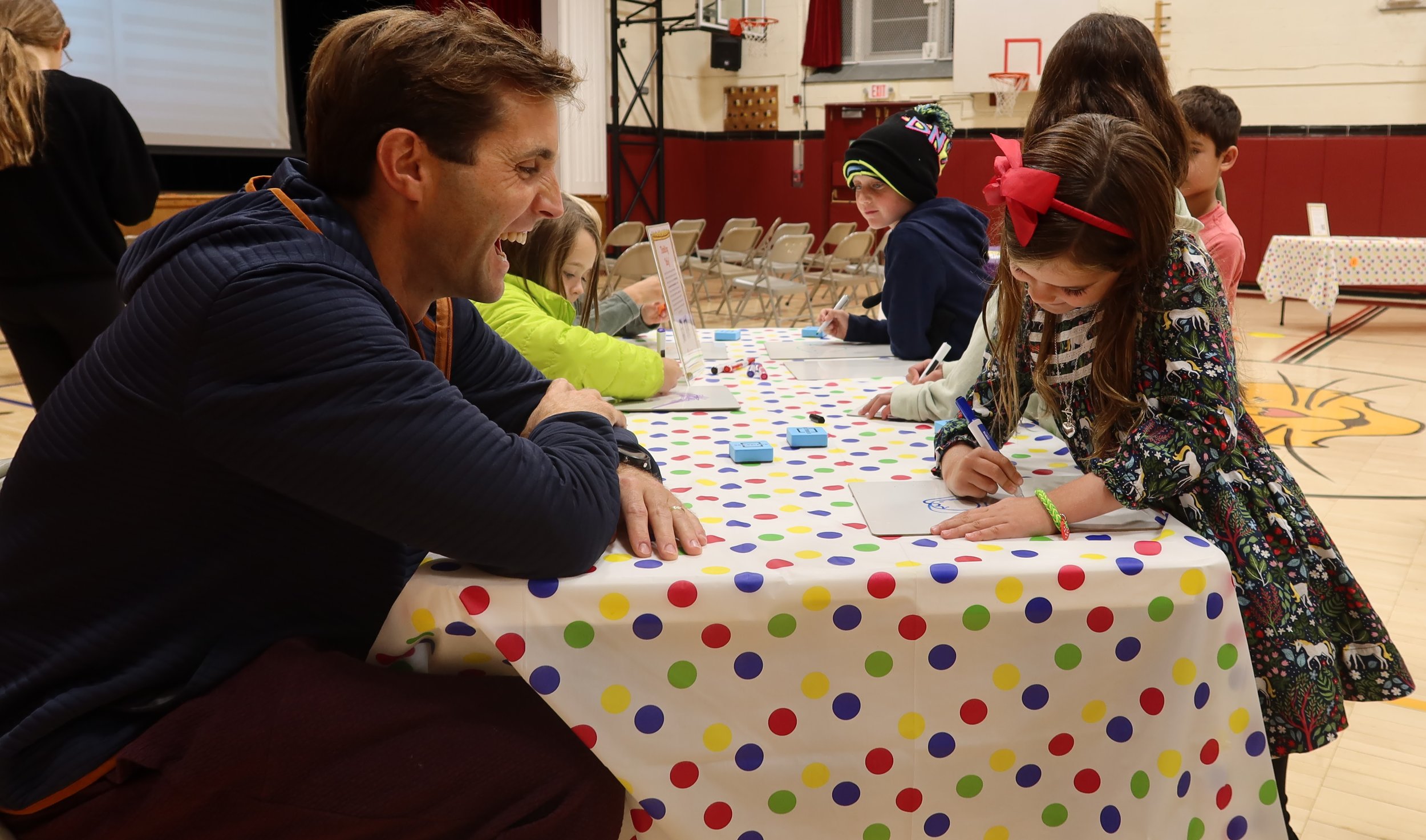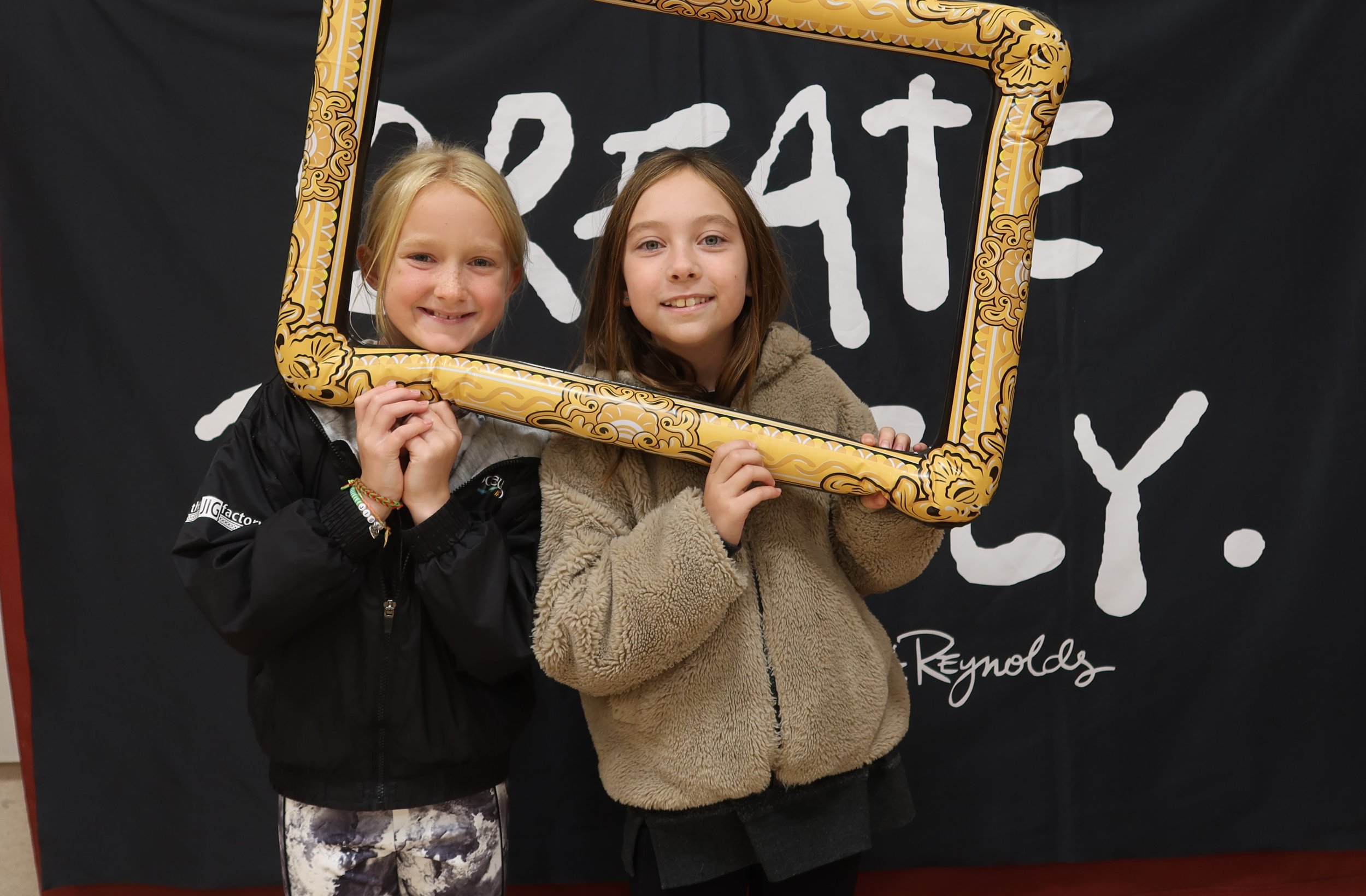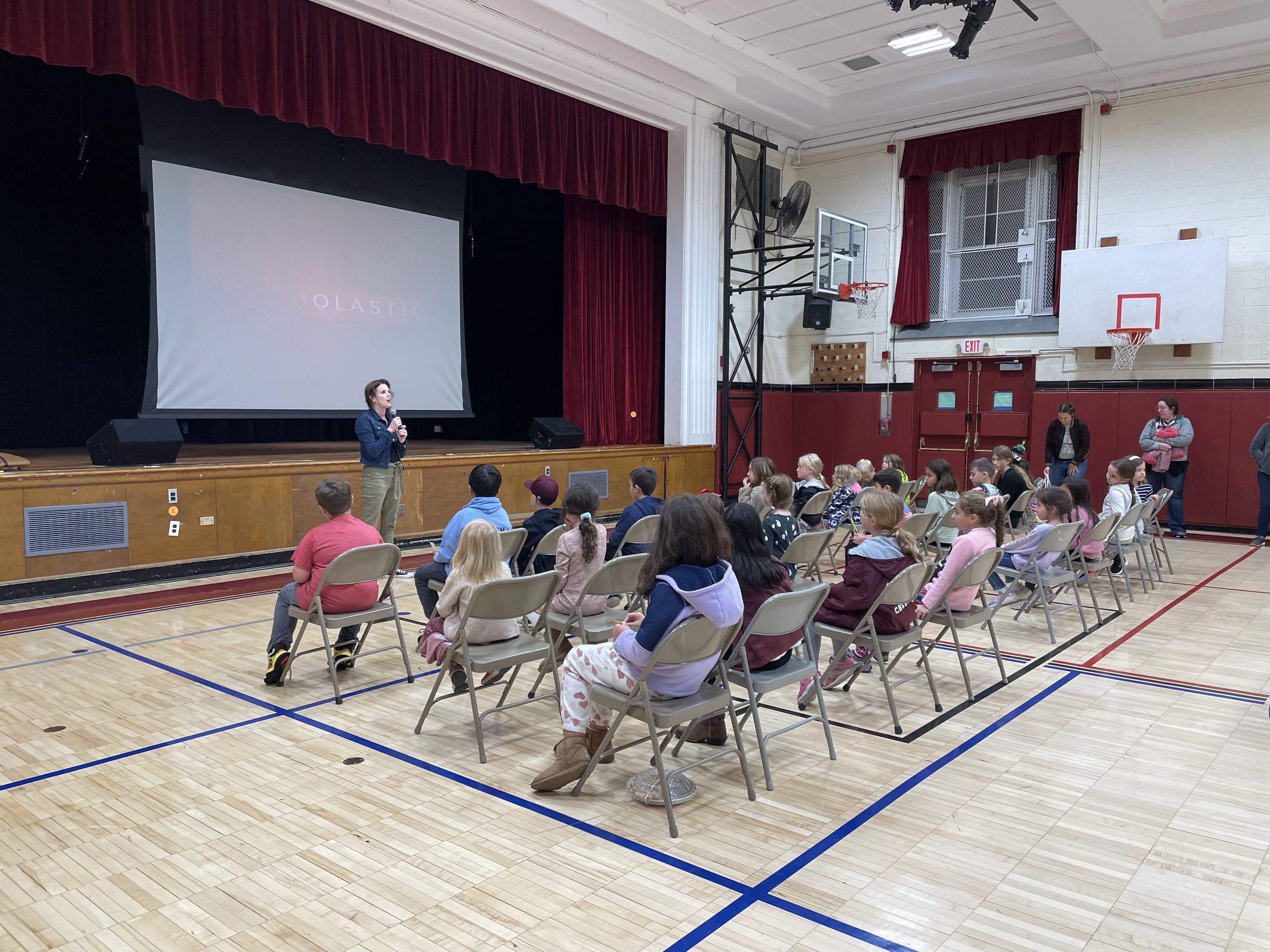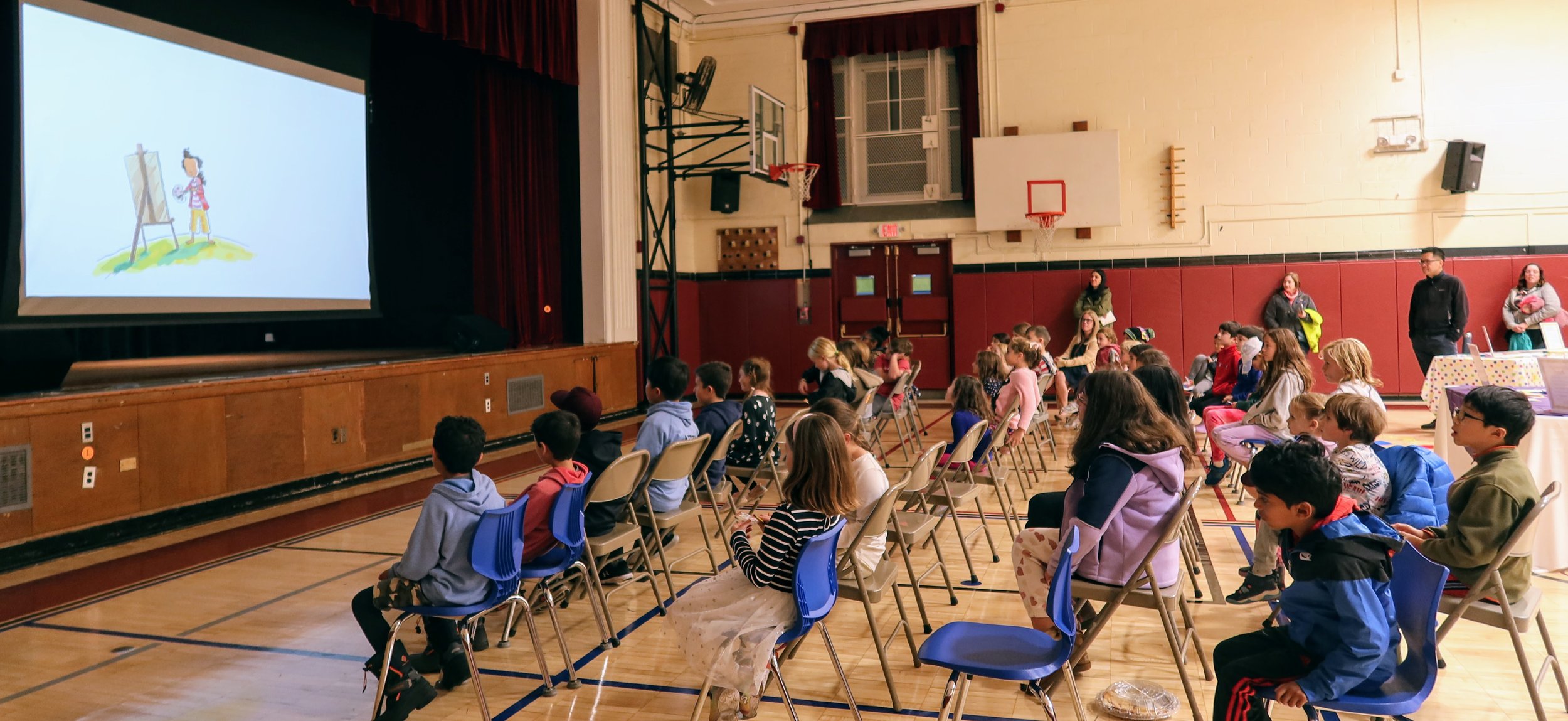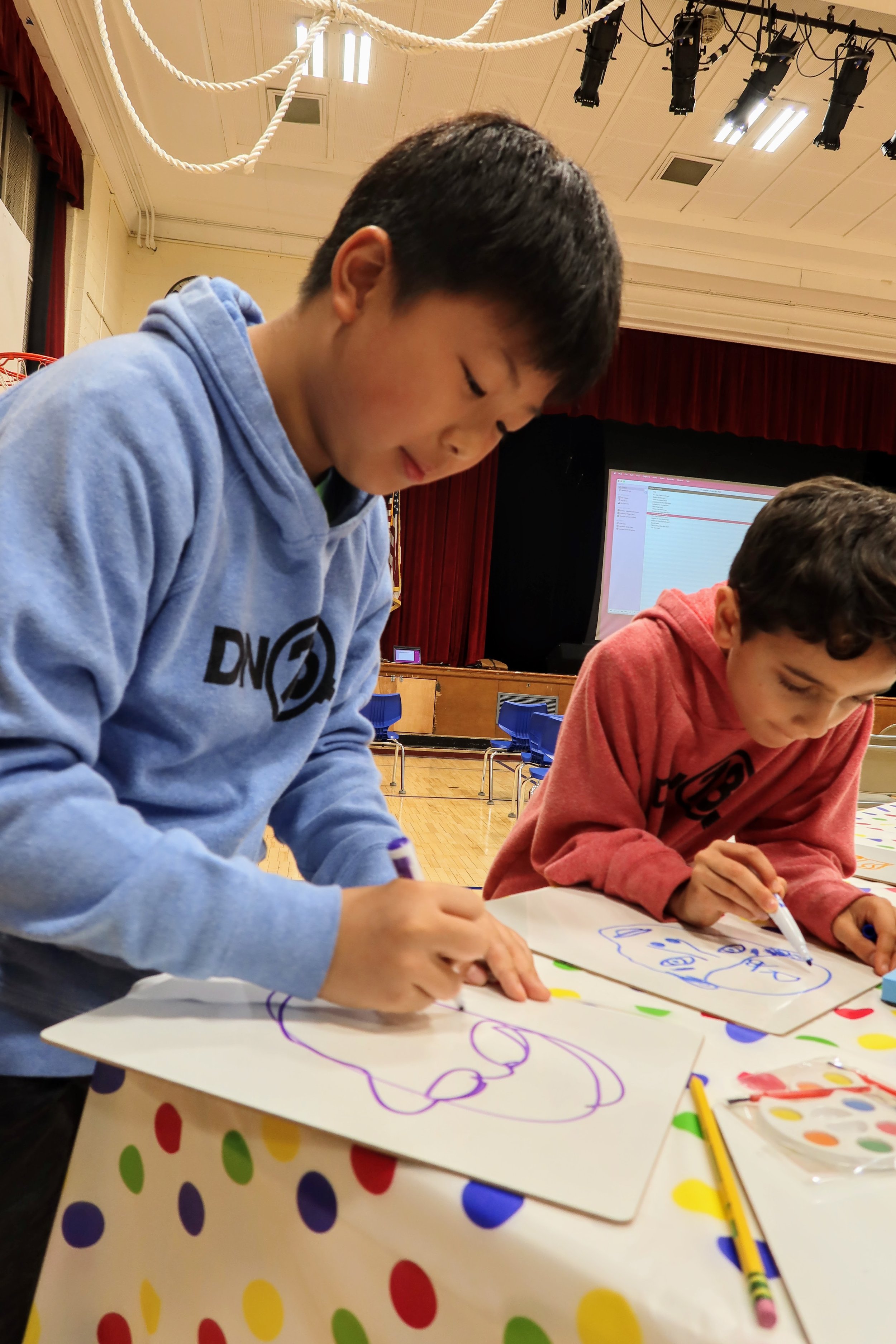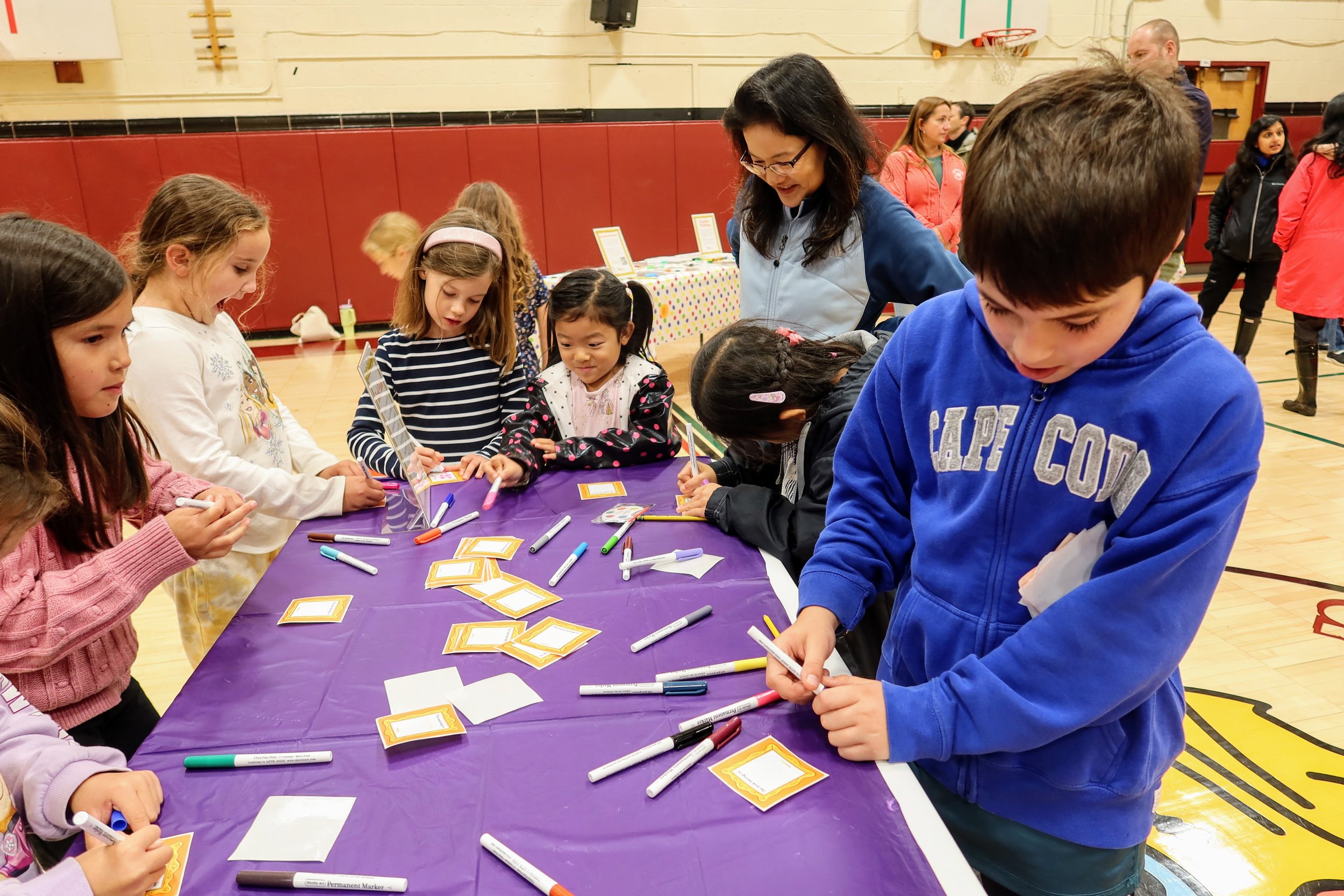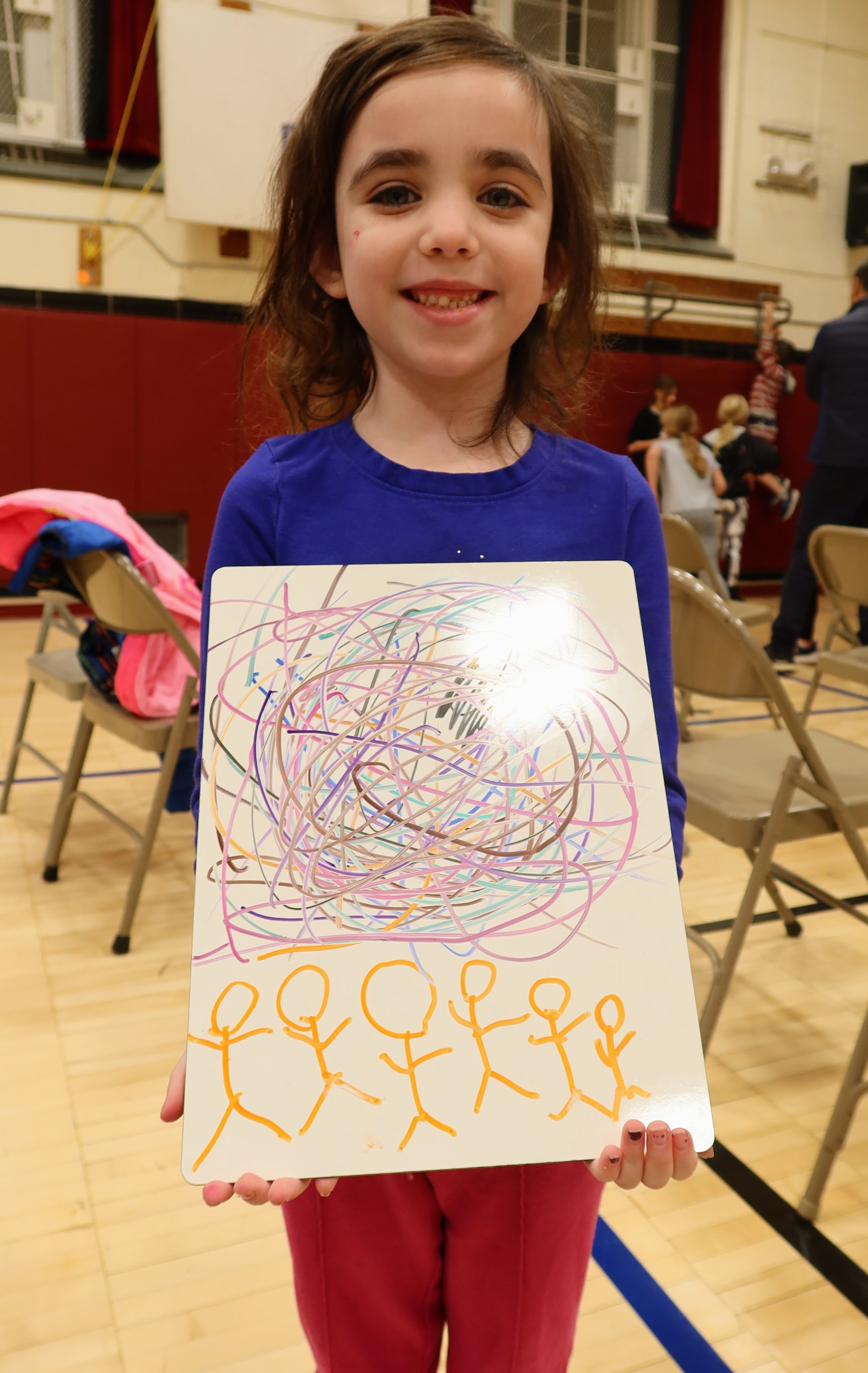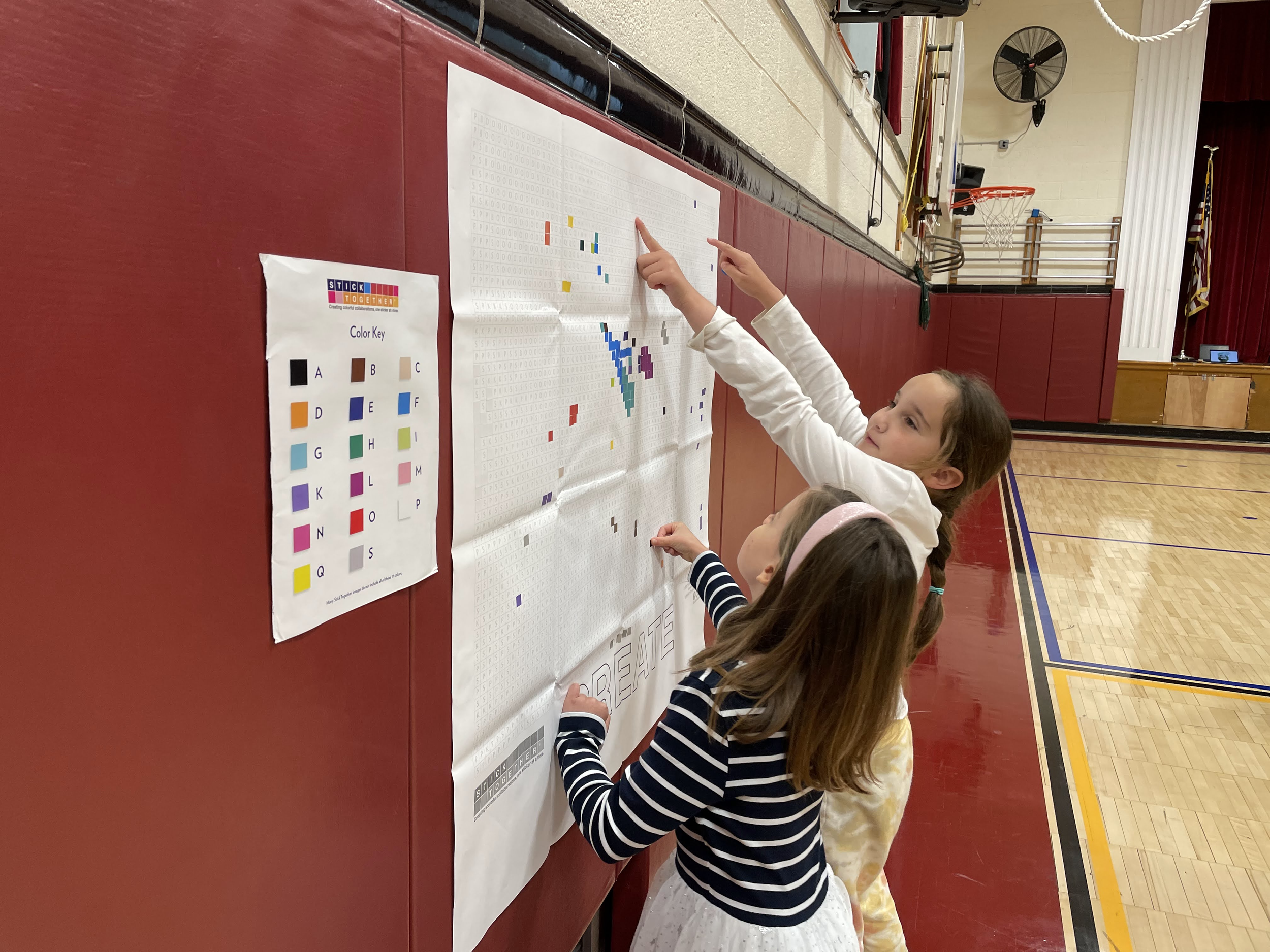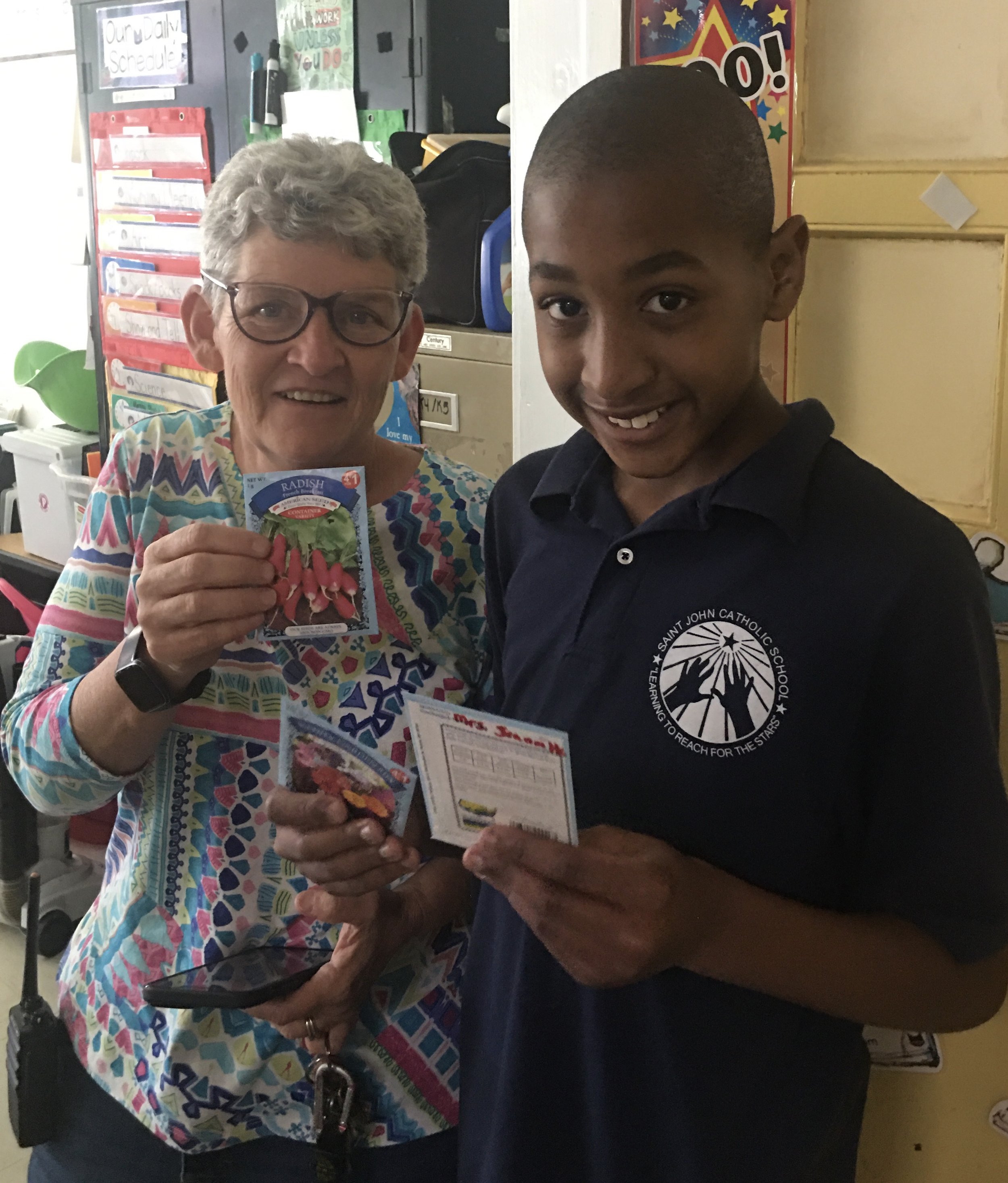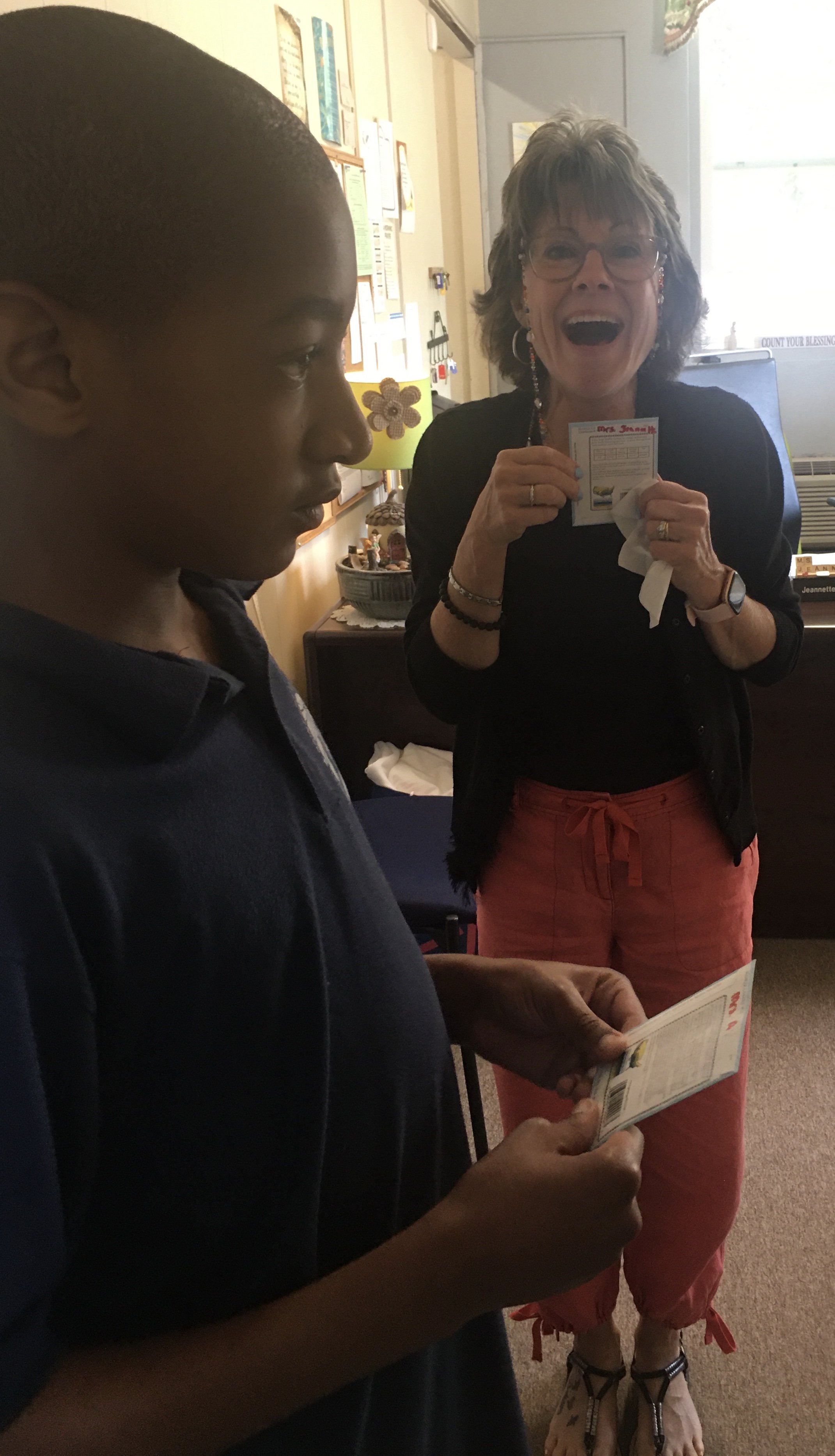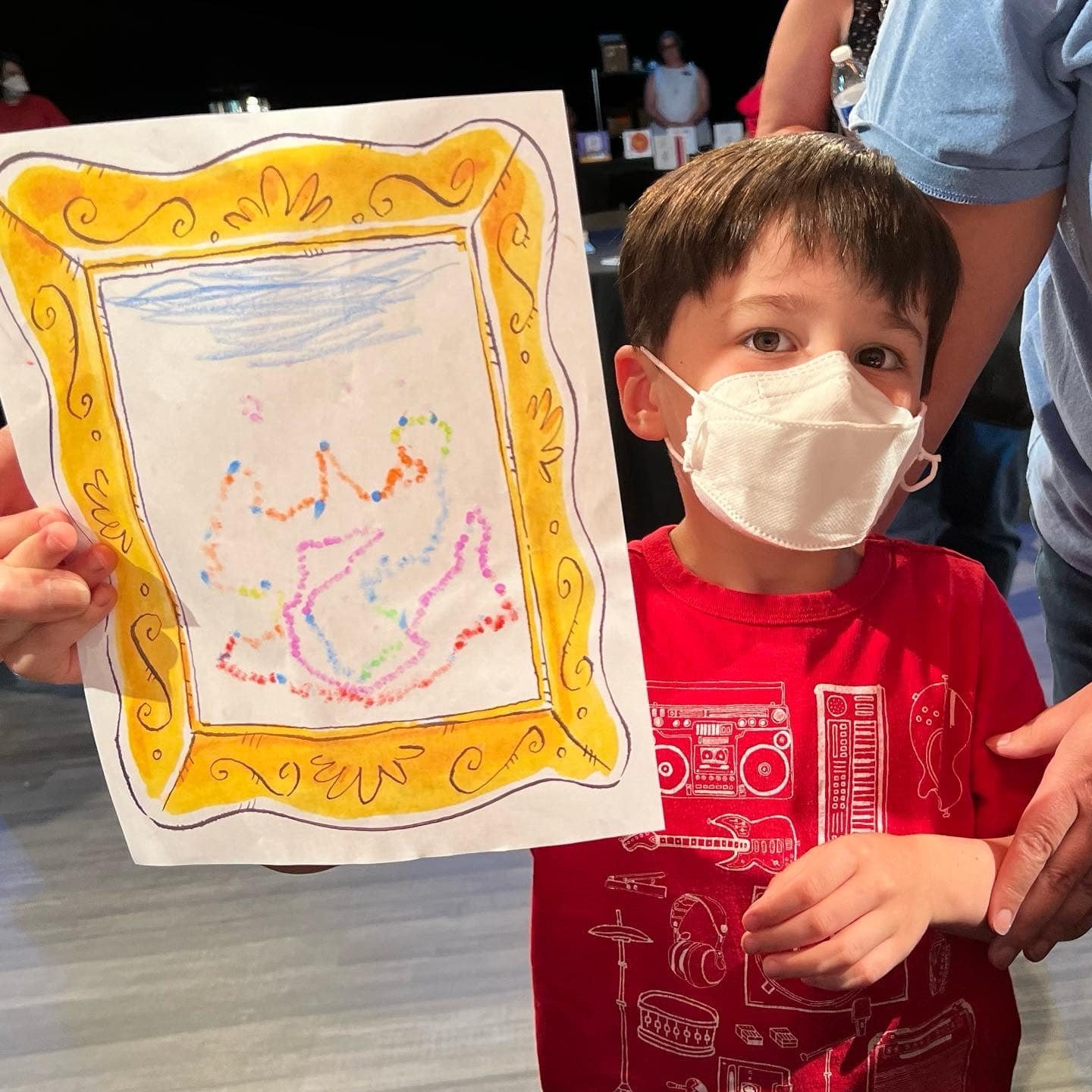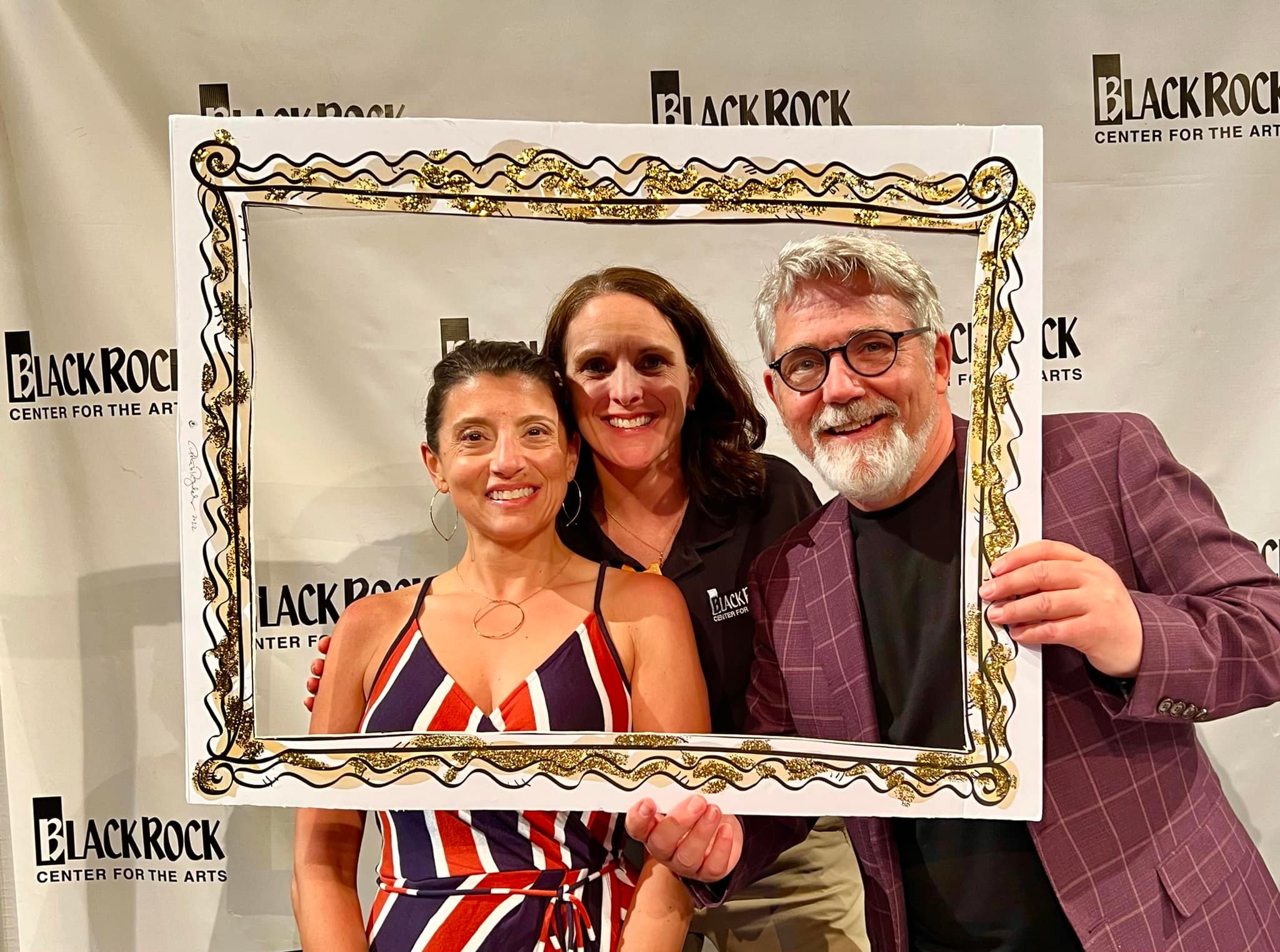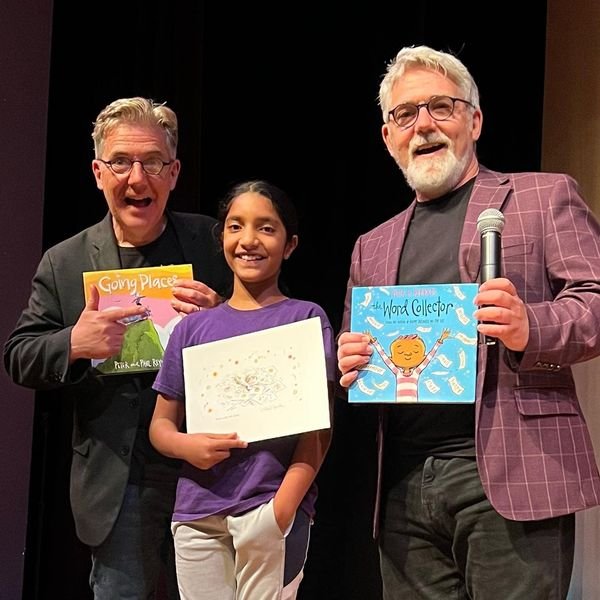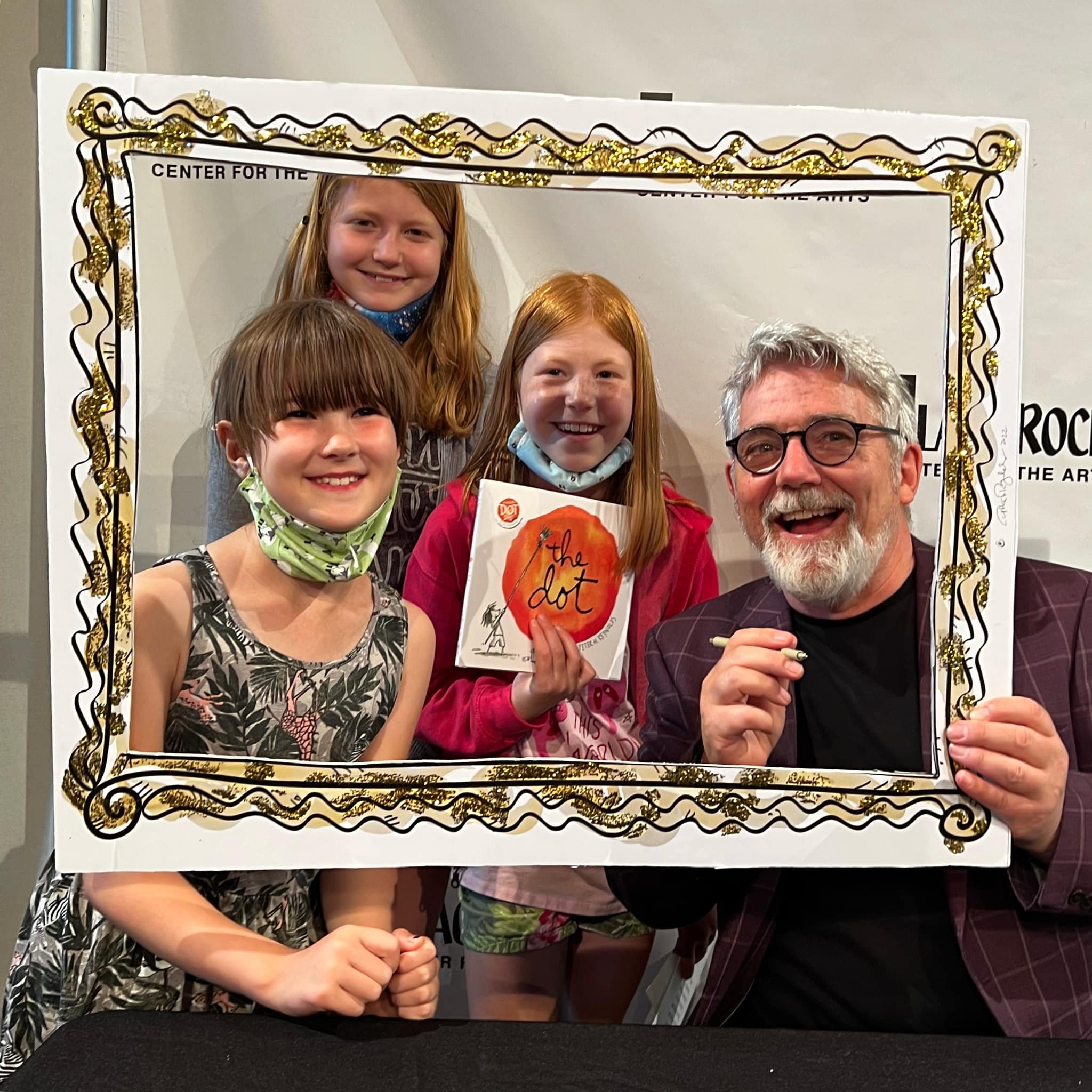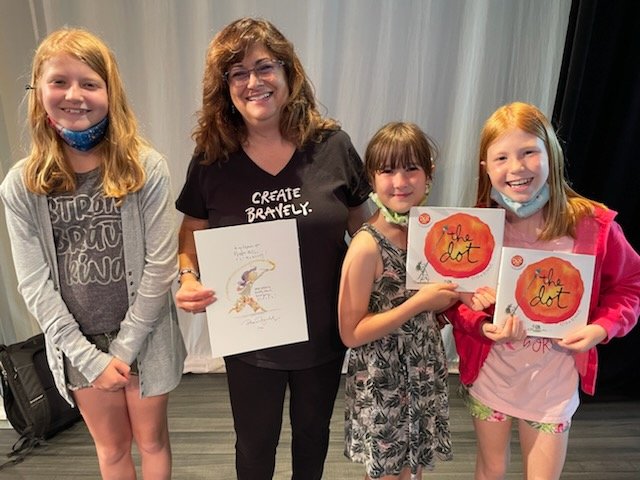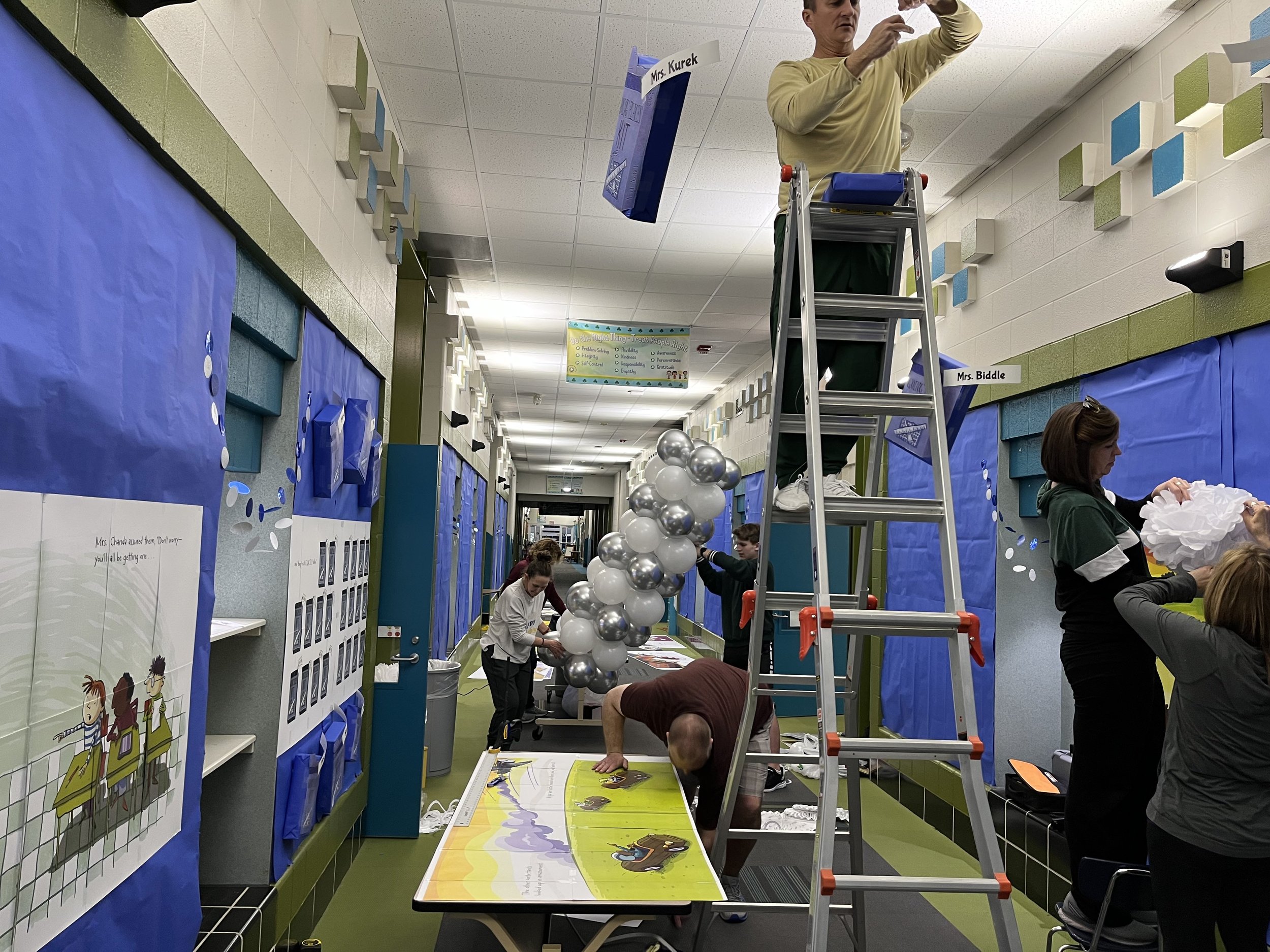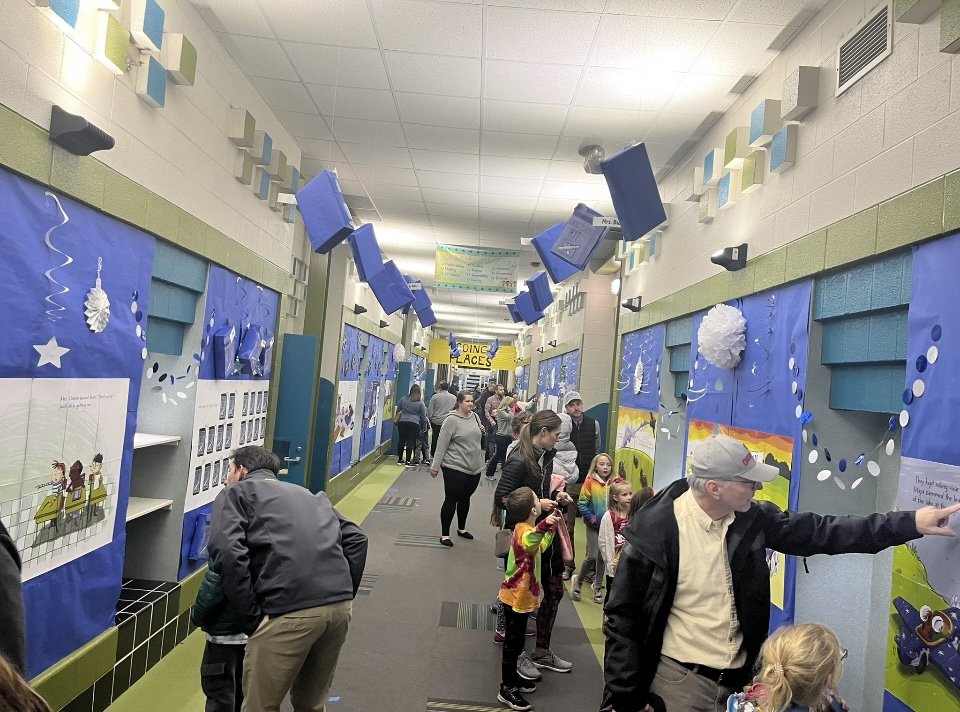FableVision Learning Spotlight Blog
Categories
- Animation-ish 42
- Books 21
- Civics! 2
- Classroom Spotlight 17
- Conferences and Events 20
- Creative Educator 3
- Creativity 25
- Distance Learning 13
- Dot Day 22
- FabClassroom 28
- FabFriday 19
- FabMaker Studio 66
- FabMaker Studio Classroom 13
- FableFive 7
- FableVision Games 3
- Free Educator Resources 36
- HUTCH 1
- Home Activities 5
- In the Classroom 34
- In the News 11
- International Dot Day 23
- Ish 1
- Library 1
- Mapping the World by Heart 7
- Paul Reynolds 10
- Peter H. Reynolds 54
- Professional Development 9
- STEM/STEAM 20
- Storybook Academy 2
- Teacher Spotlight 14
- The Dot 17
- The North Star 2
- Words and Their Stories 1
- Zoombinis 3
Embedding Creativity in the Classroom
Is This YOUR Year of Creativity?
It is our hope that classrooms are places brimming with creativity - with new and interesting ideas that spark students' motivation, love of learning, and ability to uniquely express who they are and what they know.
While sometimes it seems like creativity and the work of school are separate matters, the truth is that students learn best, and more deeply when information is presented creatively. In fact, there is a researched based method for incorporating creative thinking skills into the classroom.
Being able to see things in different ways and from different perspectives, imagining possibilities, making connections between unexpected concepts, and breaking through the “usual” way to discover alternatives are all creative skills that strengthen students’ understanding and set them up for creating a better future.
The Torrance Incubation Model, developed by psychologist E. Paul Torrance, incorporates these creativity skills into any lesson in any subject to enliven lessons and develop creative thinking in students (and teachers!). We have begun using this model to help teachers ignite creativity in their classrooms and make meaningful lessons that lead to deep learning.
In this model, a teacher weaves a creative skill into three parts of a lesson. The first part is heightening anticipation to get the students curious and excited. Perhaps in introducing the skill “Look at it Another Way” the students are presented with this image. What is it? How does it make you feel? Can you look at it another way and see something else? This creativity skill is then incorporated into the content, for example, of learning the elements of a story.
We do this in the next part, deepening expectations, by working with the content in a more thorough way while still practicing the creativity skill. This is when we dig into what the elements of a story are and what purpose they serve. While we do this, we can look at the story another way, like through the perspective of the villain. From this perspective, do the story elements change? There is a lot to explore this way, and the teacher can guide the class through analysis.
Finally, we must give the students the opportunity to use what they know outside of the context of the lesson. This is called extending the learning. The teacher may give the students the opportunity to retell, rewrite, or continue their favorite story from the perspective of the villain, demonstrating their understanding of story elements and how they move a story along.
Once we’ve journeyed through these three levels of a lesson and incorporated a creative thinking skill, the students’ minds are primed for incubation, which means they’ll hold onto the information longer and will be more ready to use it in any context to which they can connect it. They’ll also be better able to envision new ways to use and express what they know. Can you imagine the possibilities?
We believe that everyone is creative and everyone has a spark inside them. Torrance’s model, along with the 18 creative skills he defines, brings learning to a whole new creative level. Teachers that want to learn more about fanning the spark in their students and making creativity part of their everyday lessons can join our cohort of teachers taking our Certified Creative Educator Course at www.thecreativitycircle.org.
Sara Smith is the Director of Creative Education at FableVision Learning. Sara is an experienced K-12 educator, creativity facilitator and curriculum designer. She is an amateur but enthusiastic ukulele player and improv actor. She earned her master's degree in creativity from SUNY College at Buffalo. Now she works with FableVision Learning to inspire creative thinking in teachers and students through professional development and joyful learning experiences. She lives in Charlotte, NC, where she can happily and unabashedly use the word y'all.
CITATIONS
The Torrance Incubation Model can be found detailed in Torrance, E. P., & Safter, H. T. (1990). The incubation model of teaching: Getting beyond the Aha! Buffalo: Bearly Limited.
Celebrating Student Voice in NYC D75’s Middle School After School Program
FableVision Learning is excited to celebrate the students of New York City District 75’s Middle School After School on their hard work over the last semester.
During the student showcase on June 7, students that participated in FableVision Learning’s Creative Storytelling program will share their animations and books with New York Times best-selling author and Illustrator Peter H. Reynolds and the school community.
To kick-off the program, Peter H. Reynolds will read one of his books and provide a message of encouragement to the students to keep creating because, as he likes to say, “your voice matters!”
Students will get to see their work displayed on the big screen and some students will even take the stage to read their books aloud. This celebration continues the years of work FableVision Learning has done with District 75 to help students to explore self-expression and tell their story through books and animation. After a few years of virtual visits, Peter H. Reynolds is excited to be with the students in person again to cheer them on.
Somerville Elementary School Creates Bravely With FableVision Learning
Outside the sky was gray and rainy, but inside Somerville Elementary School in New Jersey there were rays of laughter, beams of creativity, and of course, lots of lots of dots! The FableVision Learning team journeyed to Ridgewood New Jersey to run a creativity teacher PD session, a family night, a virtual author visit with Peter H. Reynolds and student workshops on writing and animation.
With a focus on creativity and divergent thinking, Sara Smith, FableVision Learning’s director of creative education, led teachers through exercises in thinking outside the box. The school has also implemented Start With a Story, a program designed to activate books by Peter H. Reynolds as students explore STEM, SEL, and digital storytelling.
Following the teacher PD, the gymnasium was transformed into Creativity Central with a selfie station, collaborative mural, scavenger hunt and Peter H. Reynolds Film Festival. Jumping from spot to spot, kids did ishful drawings of each other, created book plates and solved challenges for a special prize.
The FableFun continued the next day with a school-wide virtual assembly with Peter H. Reynolds followed by workshops with students around animation and storybook writing. Every student ended the day encouraged to Create Bravely.
If you’d like to bring exciting programs like this one to your school or district, contact us at info@fablevisionlearning.com.
New Hampshire's SAU 6 Celebrates Dot Week With FableVision Learning
I Am Brave! This special message was celebrated by every student in Claremont/Unity New Hampshire during the FableVision Learning week of creativity that launched with the Creatrilogy Family Night and continued during the week with a coding activity at each elementary school.
I Am Brave!
This special message was celebrated by every student in Claremont/Unity New Hampshire during the FableVision Learning week of creativity that launched with the Creatrilogy Family Night and continued during the week with a coding activity at each elementary school.
To activate the district’s goal of student growth, the team at FableVision Learning helped SAU #6 kick-off the year with energy and joy through a hands-on student activity to remind them that they are brave and they can do hard things. By creating and deciphering binary code necklaces, students carried the important message of bravery with them around their necks.

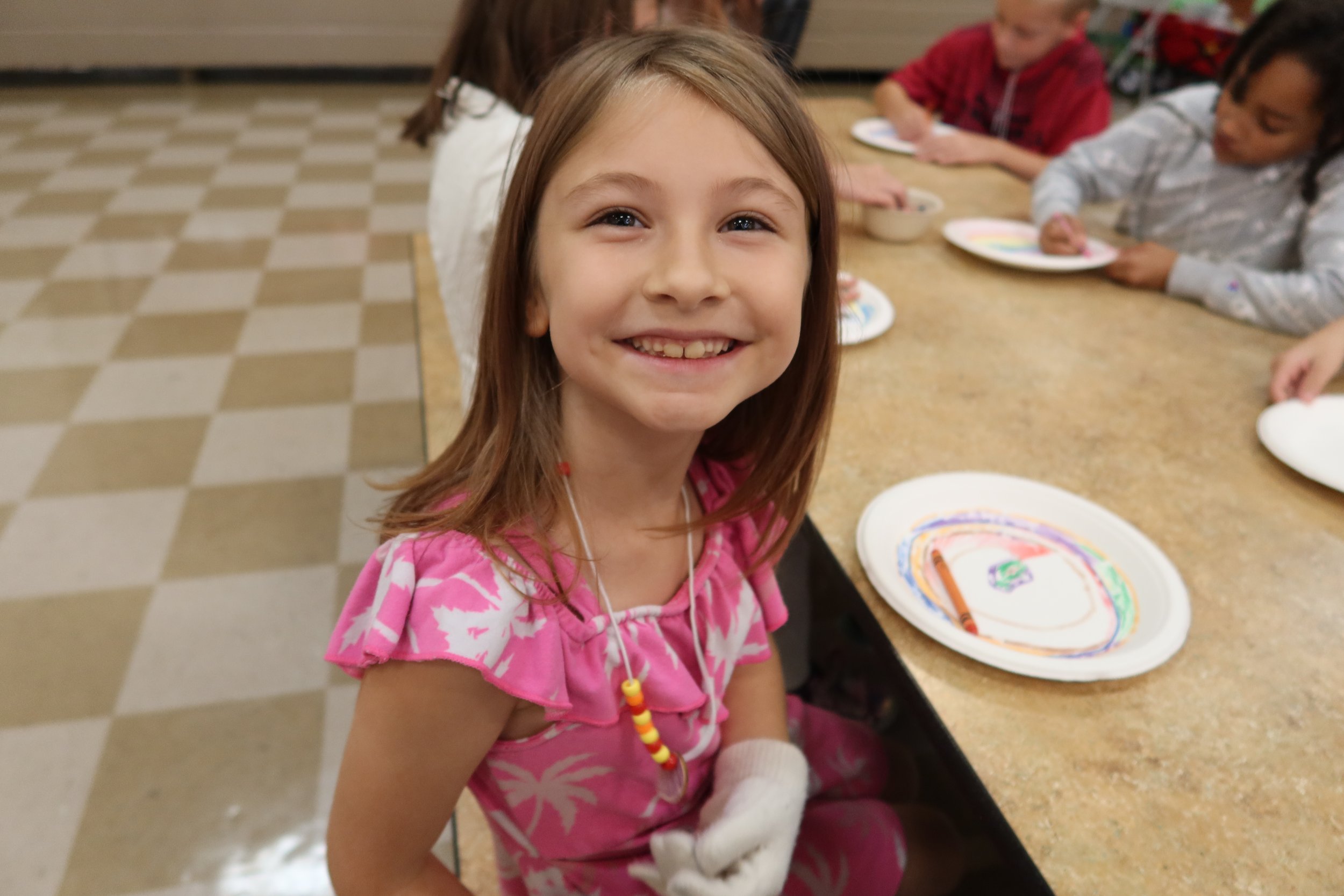
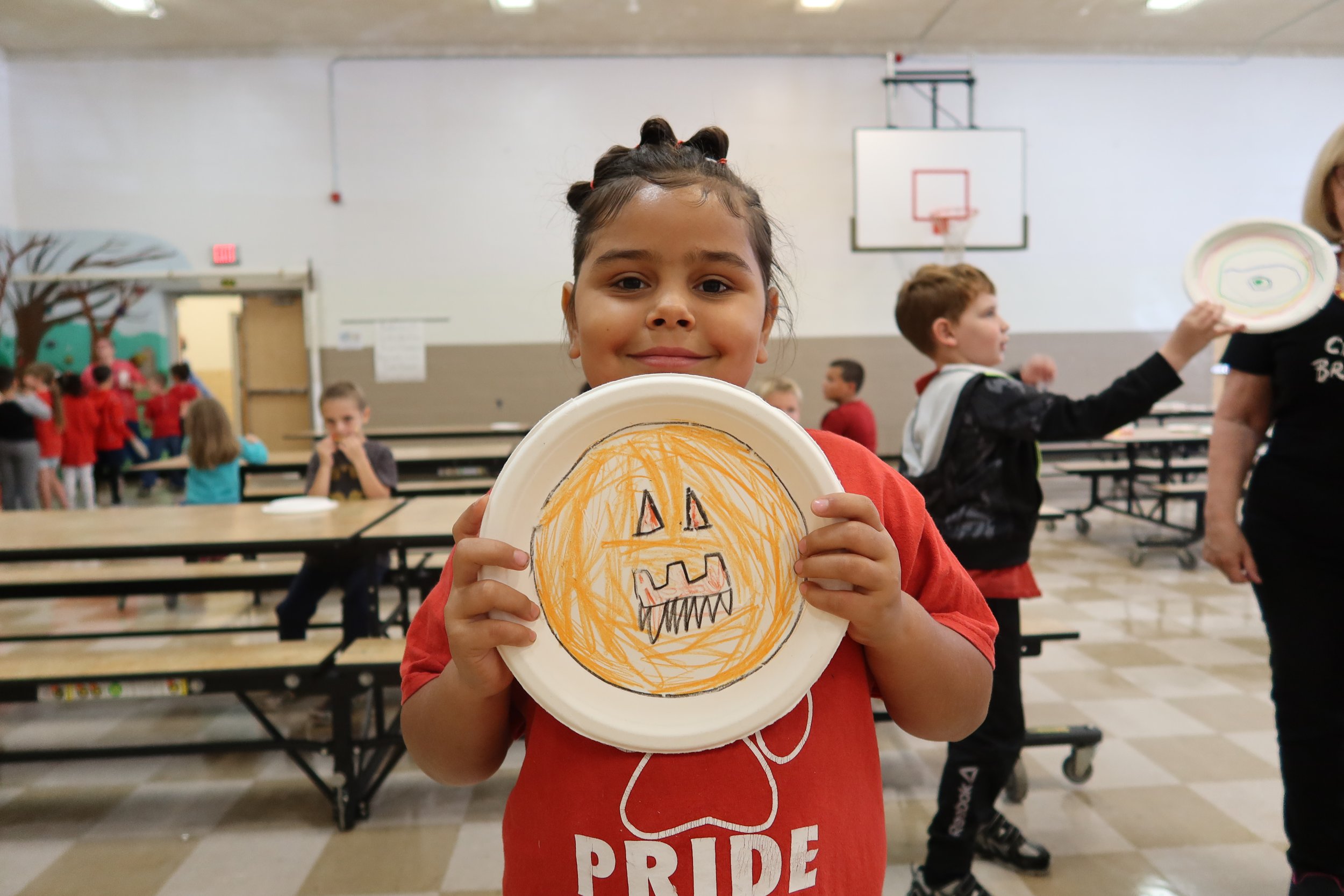
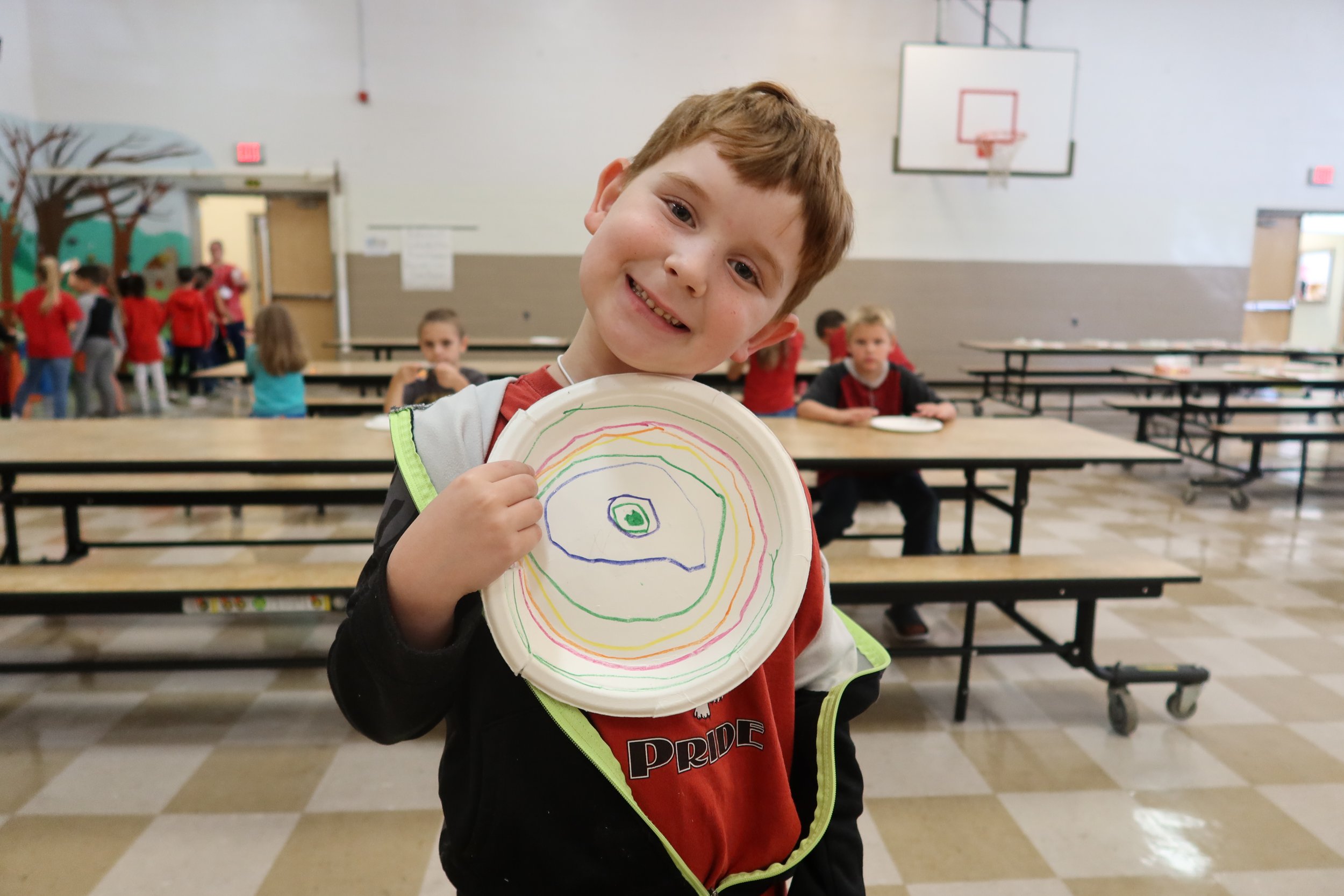
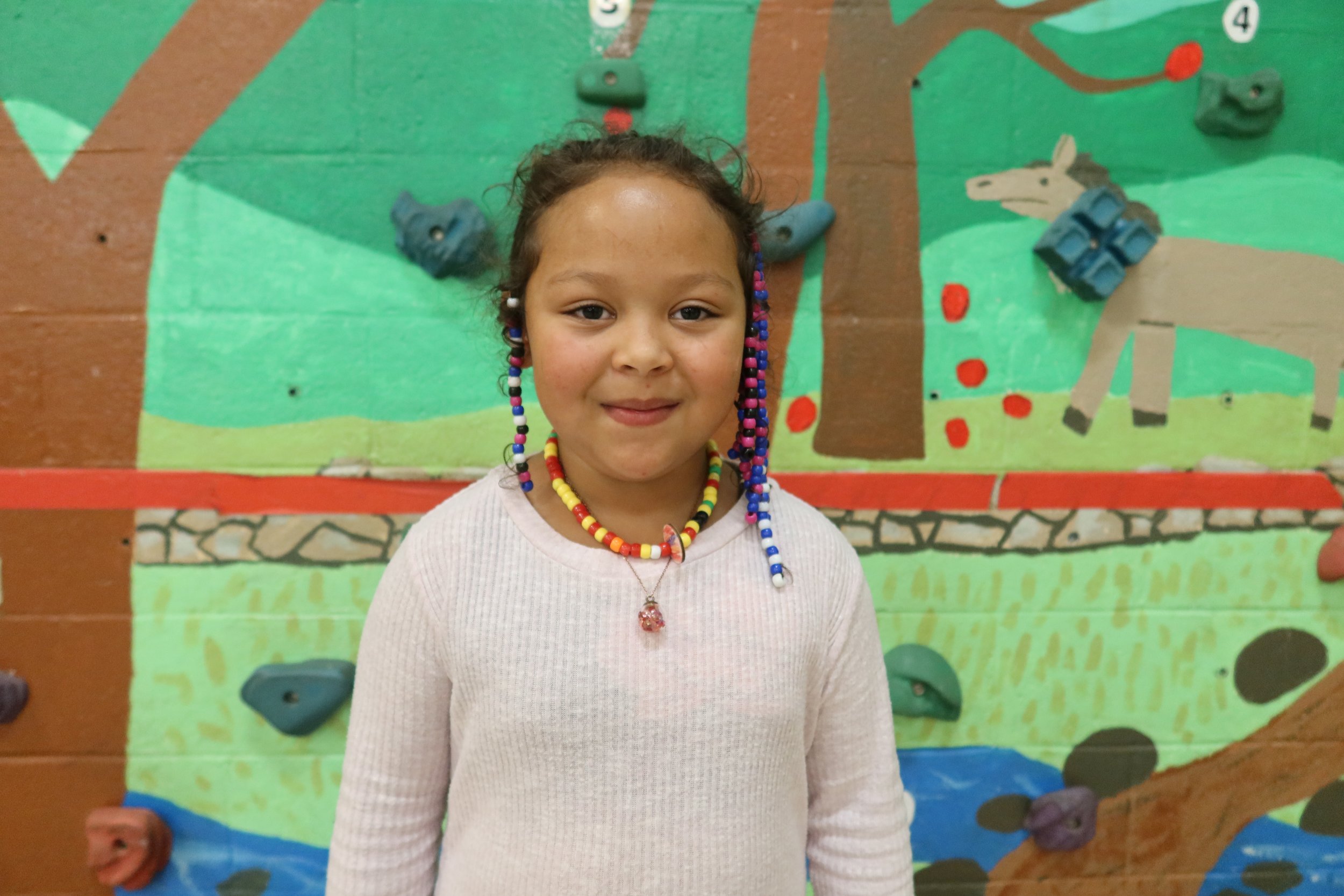
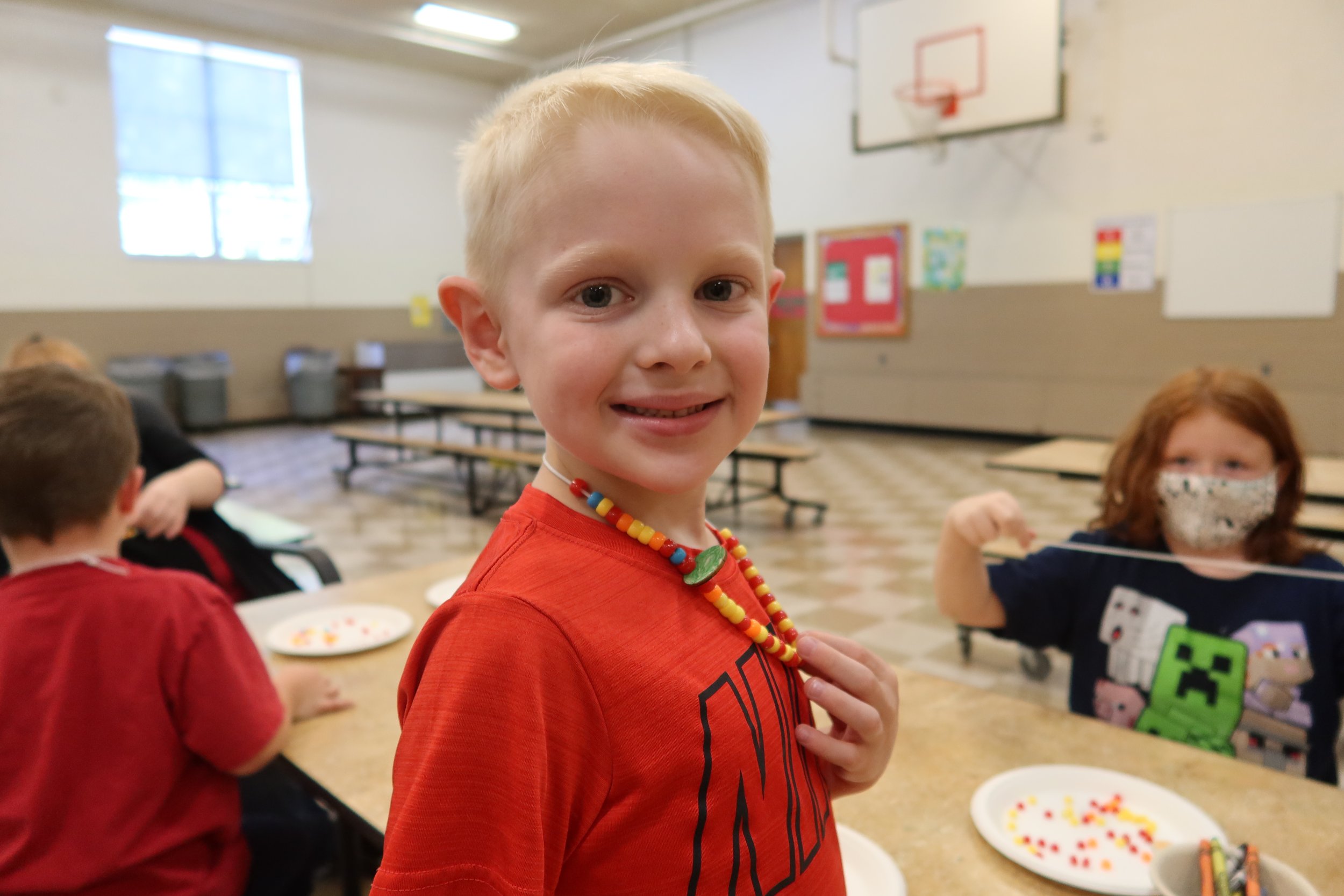

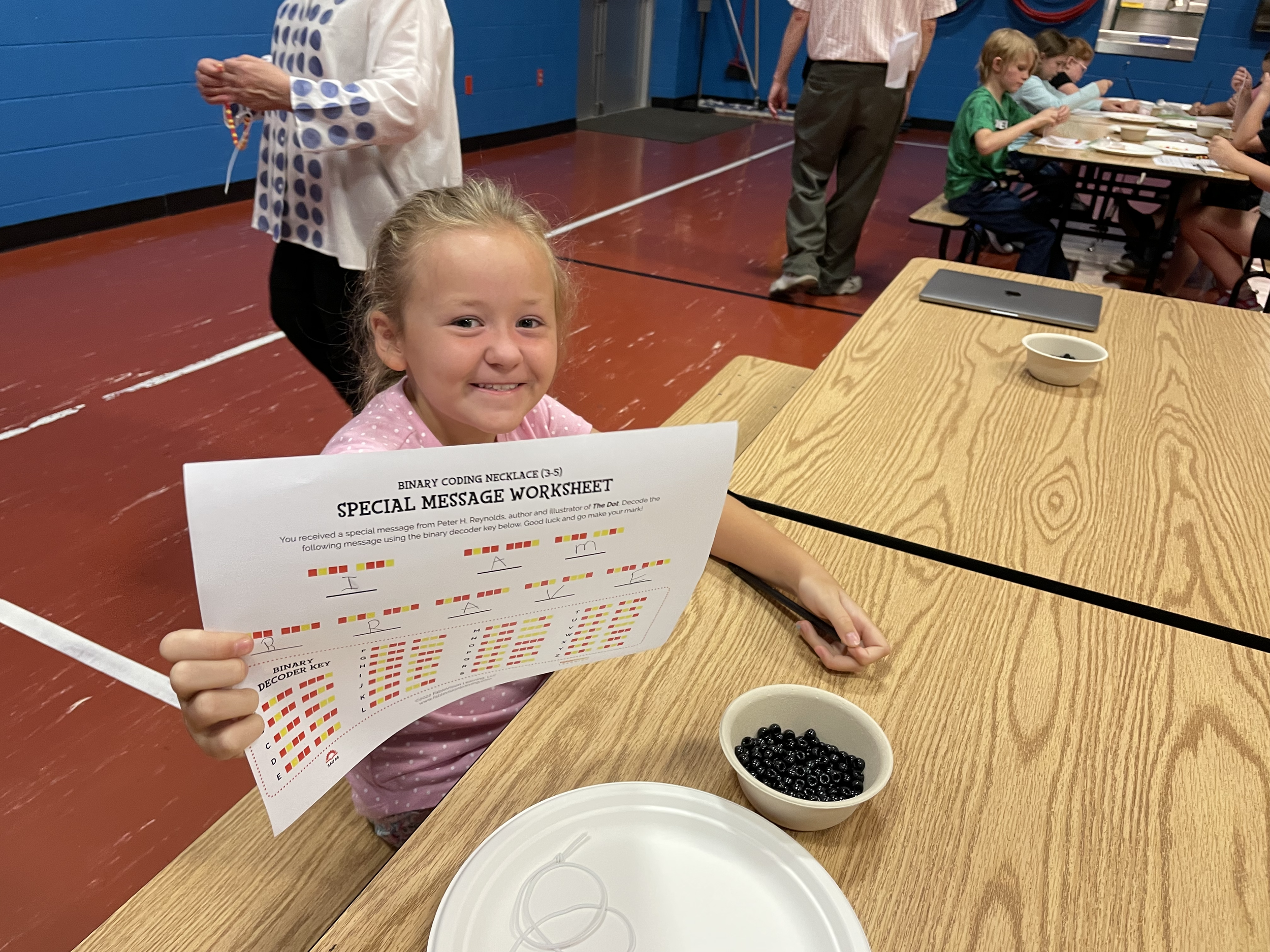
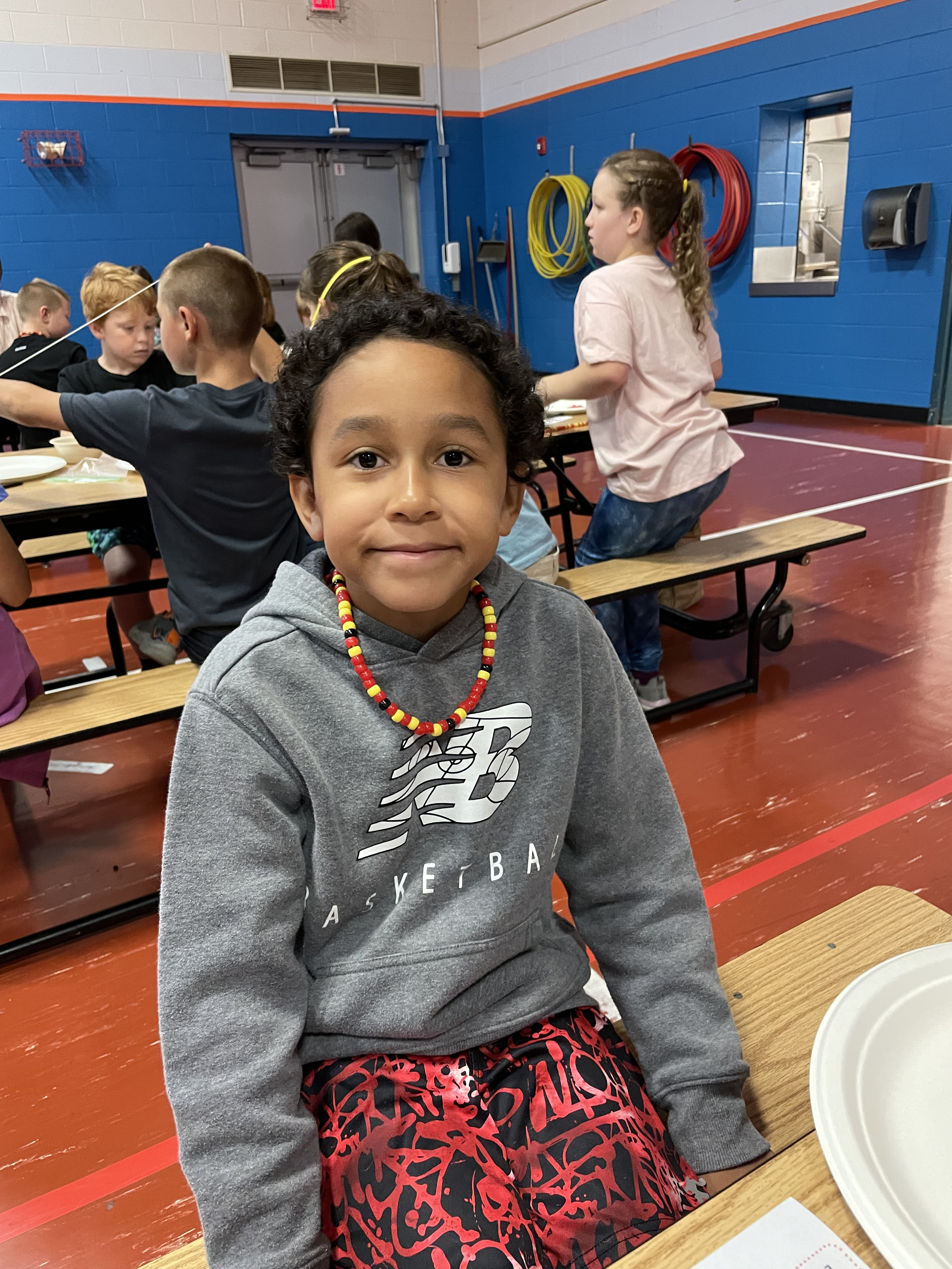
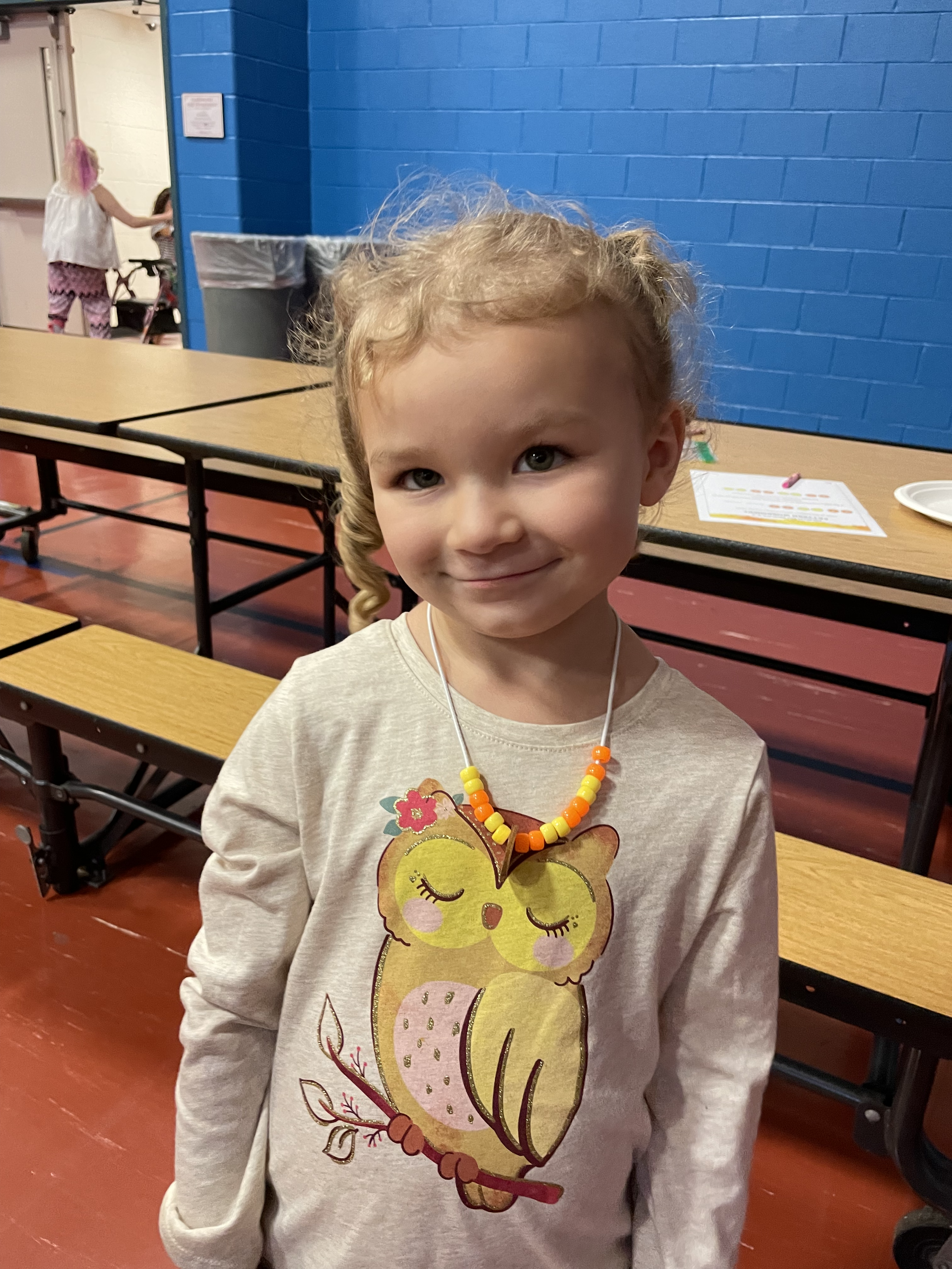
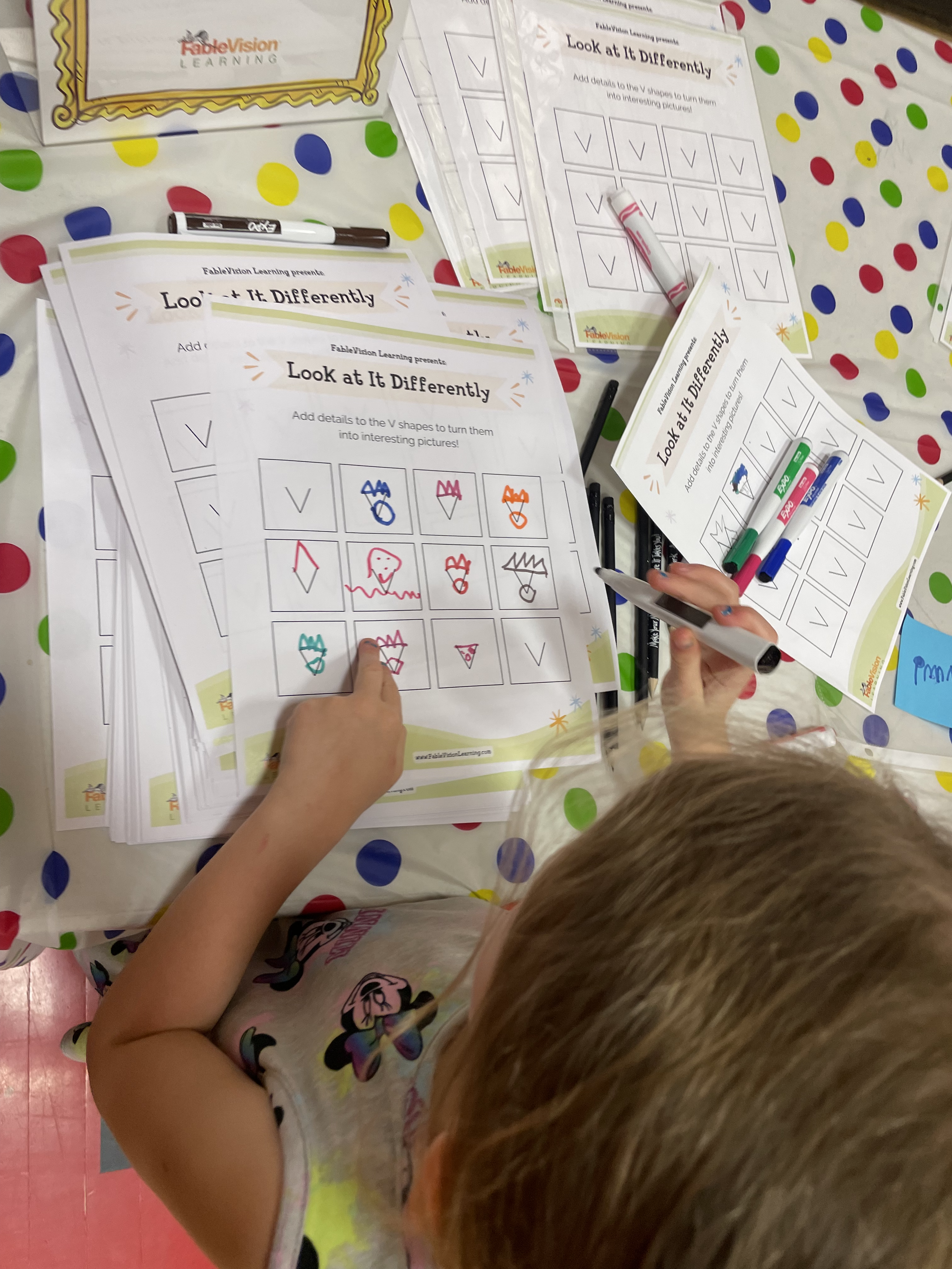
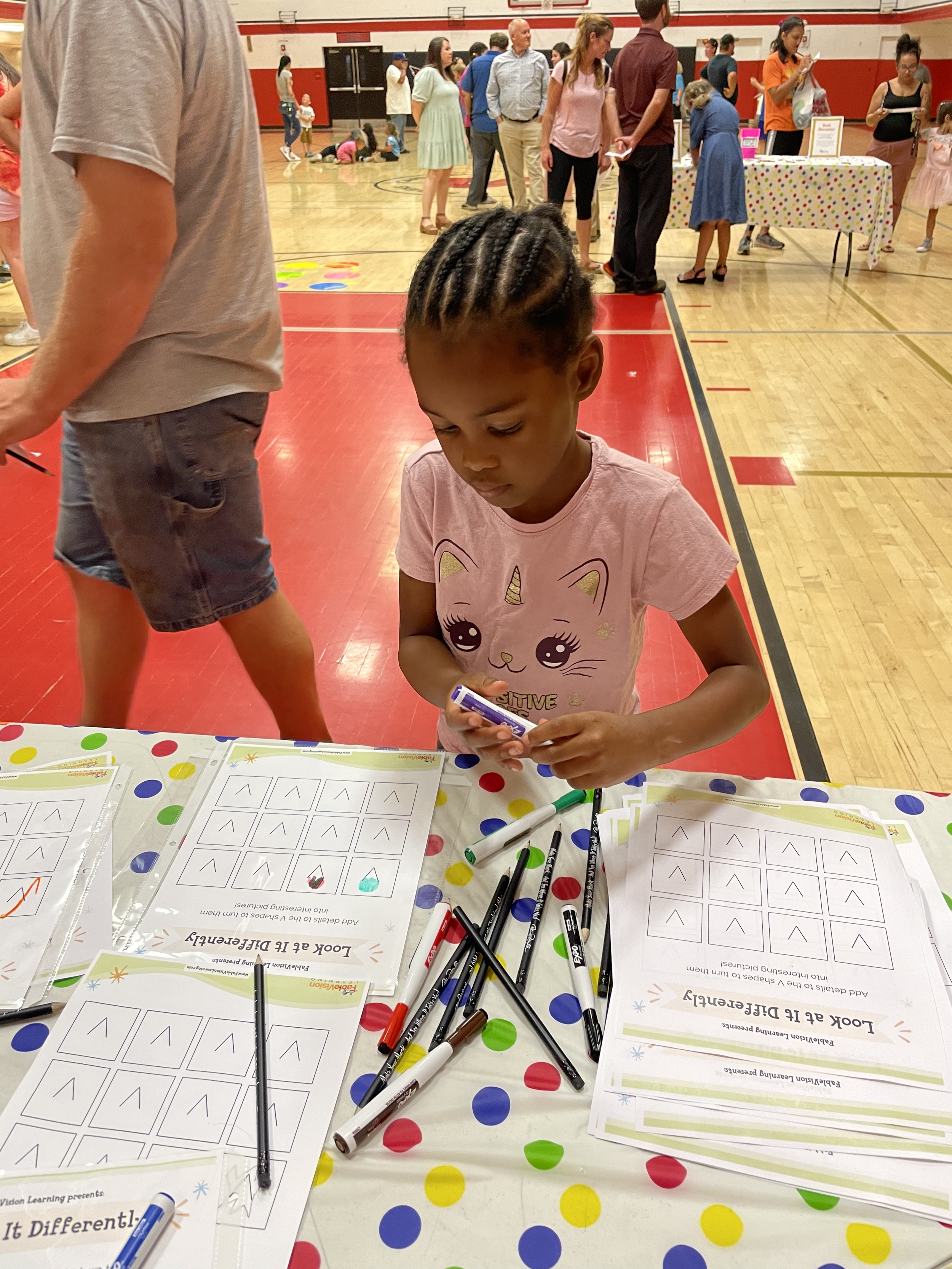
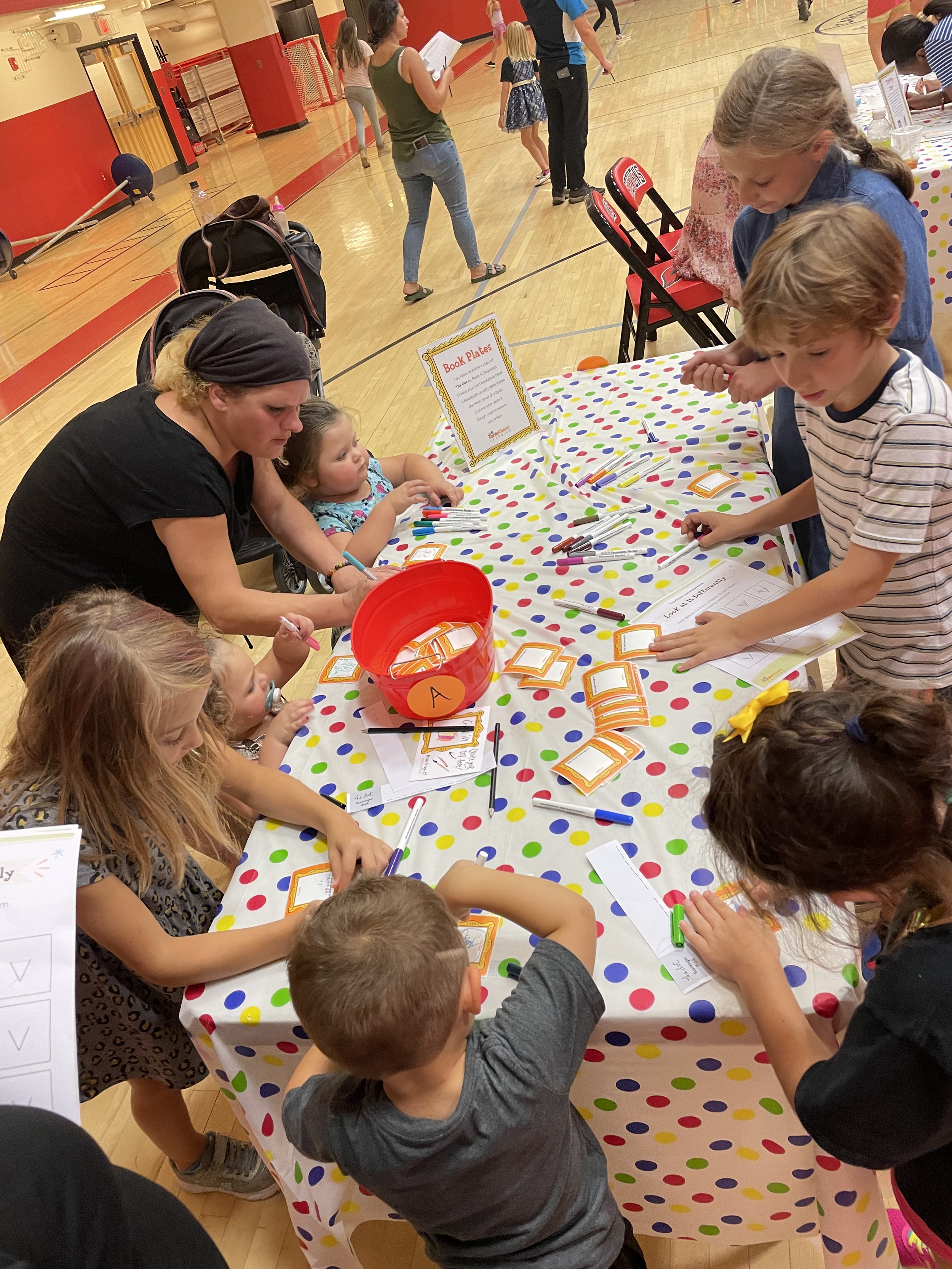
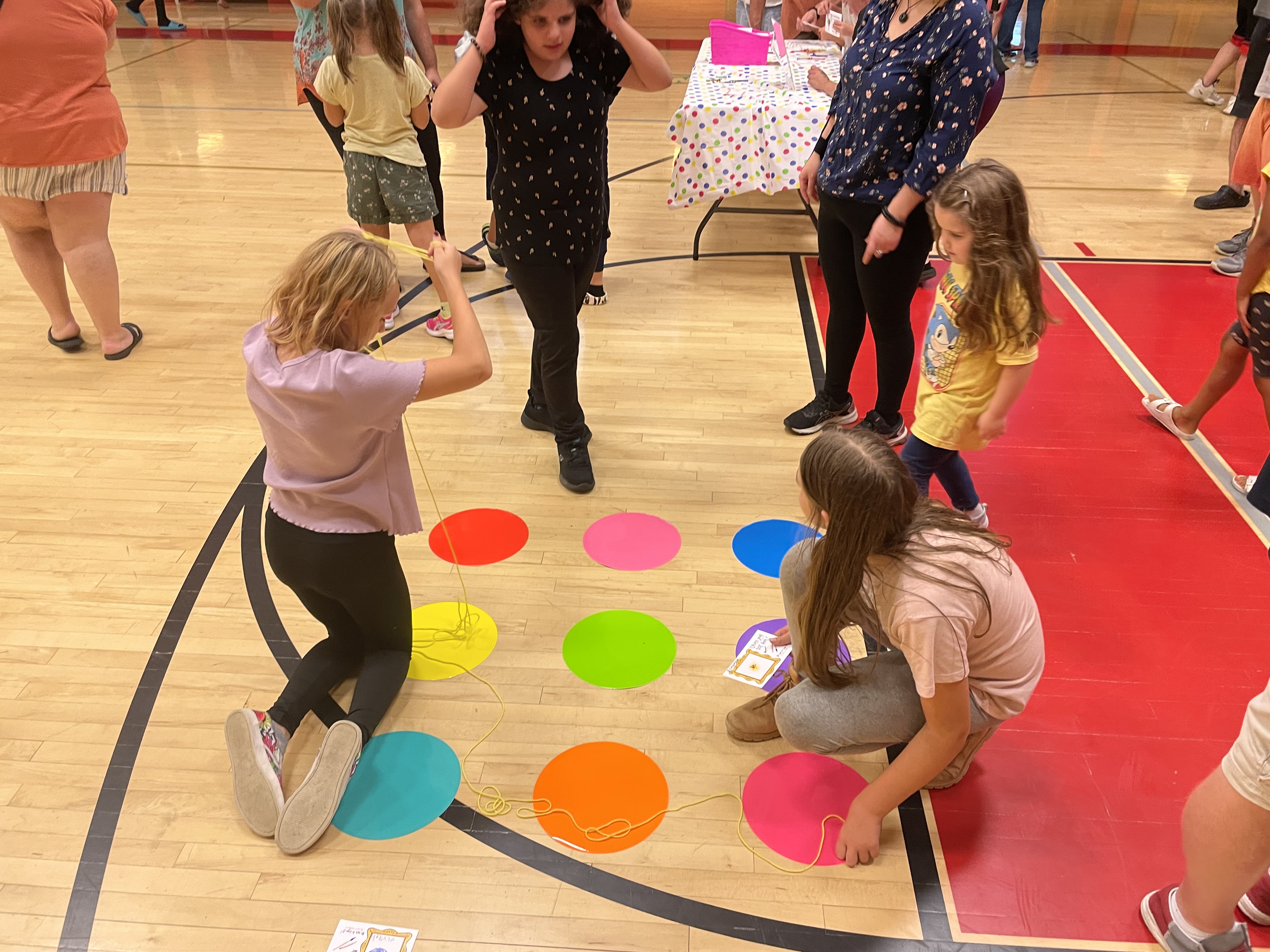
The most exciting part of the week, though, was The Creatrilogy Family Night. All of the families in the district were invited to come to the high school for a Stories that Matter, Stories that Move animated film festival followed by activities all related to Peter H. Reynolds’s Creatrilogy of books The Dot, Ish, and Sky Color. Families worked on collaborative art, searched for hidden dots, and stretched their minds with brain teasers and challenges.
There is a lot more in store for SAU#6 Claremont/Unity this year. We are so happy to be part of their year of growth. If you’d like to bring exciting programs like this one to your school or district, contact us at info@fablevisionlearning.com.
South Carolina Teacher Takes Classroom to Next Level With FableVision’s Creative Educator Certification Course
The following blog post was written by Tyler Stott, an intern at FableVision Learning.
Molly Myer, a teacher at Saint John Catholic School, in South Carolina, has taken her teaching to the next level with FableVision Learning’s Creative Educator Certification Course. Myers shared that this course is helping her learn more about creative learning as has also been using Animation-ish and FabMaker Studio.
“The Certified Educator Course has been a lot of fun to work on. It is helping me to think more outside of the box. It ties in beautifully with my students’ Passion Projects which they are starting to work on. The student creativity guidebooks provided are an excellent tool to help my students come up with their Passion Projects topics. I love the self reflection that they are doing in these guidebooks,” Myer said.
Not only has the course provided her classroom with a lot of fun STEM activities, Myer says that it has changed her approach to teaching.
“The course offers such a great opportunity to go through it at my own pace and come back to materials. It is helping me to be more reflective as a teacher and to take my time, “she explained and added, “It has helped me to come up with ideas on how to best help and motivate a child who might be hesitant about trying.”
Students of Myer create their own original ideas and projects on applications such as FabMaker Studio and Animation-Ish, which are provided by FableVision Learning. Myer has loved watching every moment of it.
“The students love (the programs). It is so neat to see even the most hesitant student comfortably navigate this amazing tool. The creativity I have gotten out of my students using these amazing tools has been life changing,” she shared.
Check out the photos from her classroom.
Big Picture Living: Tools to Start the Conversation around Lifestyle Wellness
At FableVision Learning, we firmly believe in dreaming BIG. So does our partner, with BIG right in the name: Big Picture Learning. We are excited to announce that FableVision/The Reynolds Center and Big Picture Learning have partnered with American College of Lifestyle Medicine (ACLM) to embark on a student-driven movement: Big Picture Living.
This blog post was written by Katie Hurwitz, an intern at FableVision Learning.
At FableVision Learning, we firmly believe in dreaming BIG. So does our partner, with BIG right in the name: Big Picture Learning. We are excited to announce that FableVision/The Reynolds Center and Big Picture Learning have partnered with American College of Lifestyle Medicine (ACLM) to embark on a student-driven movement: Big Picture Living.
This program - packed with FREE Resources to start the conversation around lifestyle medicine and student projects to put the message into action. We encourage you to read on to learn more about Lifestyle Medicine and Big Picture Living and to click here to sign up for the free resources.
Pilot Schools: We are also looking for a handful of schools/after-school programs to pilot the Big Picture Living Conversation Cards in the fall and provide feedback for future versions. If you are interested in learning more please email andrea@fablevision.com and we will get you started.
What is Big Picture Living?
While young people in 2022 should be able to realize their true potential, there is a major setback: a crisis of higher-than-normal mental and physical health concerns.
Our youth are experiencing:
Increased mental health concerns
High death rates of COVID-19 that is disproportionately affecting families and children of color
Rising youth isolation
Disengagement from school
Higher rates of pre-existing conditions (such as obesity and diabetes) - especially with poor and Black and Latinx youth color
Education and health professionals have historically been siloed in their practices, so it was about time that we connected the dots in order to address blatant health inequities and the growing health crisis that affects the youth in our nation and our world.
Big Picture Living is a movement intended to raise awareness of the day-to-day behaviors that impact our lives and how long we live it. This movement is intentionally designed to spark meaningful transformational change in young people’s lives through healthy lifestyle choices—so that they can dream big and create bravely.
Just as FableVision Learning’s secret to success consists of the 4 Cs (plus 1)—creativity, communication, collaboration, critical thinking, and compassion—Big Picture Living harbors their own secret to success called Lifestyle Medicine.
What is Lifestyle Medicine?
Lifestyle Medicine, as defined by ACLM, is an evidence-based approach to preventing, treating, and even reversing disease by replacing unhealthy behaviors with positive ones. Big Picture Living actively utilizes lifestyle medicine as the guide to educate and support positive behavior changes in young people by focusing on six lifestyle elements.
Nourish (nutrition)
Move (exercise & physical activity)
Chill (stress management)
Recharge (sleep health):
Caution (avoiding risky substances)
Social (relationships & emotional resiliency)
The medical community has made it clear that nearly 80% of chronic ailments are preventable and reversible through changes in lifestyle choices. By engaging with these 6 Measures, we can prevent diseases and ills that, through time and accumulation, can harm one’s life.
Talking About Lifestyle Medicine With Students
Part of the Big Picture Living movement is utilizing The Big Picture Living Conversation Cards, which are designed as a way for schools/programs to introduce lifestyle medicine through discussion and activities for each of the 6 measures. Included in each measure are…
Reflect & Consider Cards: 4 discussion prompts with information to guide the conversation. Each card includes a Quick Bite - a short extension activity inspired by the discussion.
Activities: 4 activities to personalize the measure and activate community engagement.
The Big Picture Learning website (www.BPLiving.org) is the hub for educator resources, student work, webinars, social media challenges and so much more!
Ready to get started? We are looking for for a handful of schools/after-school programs to pilot the Big Picture Living Conversation Cards in the fall and provide feedback for future versions. If you are interested in learning more please email andrea@fablevision.com and we will get you started.
Paul and Peter H. Reynolds Share Stories That Matter During 3-Part Literacy Event
Peter and Paul Reynolds had a packed dance card on their recent trip to Washington, DC & Maryland, as they celebrated their love of books, films and “stories that matter” with thousands of kindred spirits in Montgomery County.
Their first stop - Flower Hill Elementary in Gaithersburg, MD, with Library Media Specialist Melissa McDonald, who is also on the Gaithersburg Book Festival Planning Committee, and was the original “dot connector” who pitched the Reynolds brothers to attend the book festival.
The brothers presented to a group of very enthusiastic Flower Hill students from grades 3 to 5. Peter and Paul shared their stories and offered encouraging messages about using one’s creativity and compassion to move the world to a better place. This was the culmination event of a week-long Scholastic Book Fair, which was funded through support from Educational Systems Federal Credit Union, Lafayette Federal Credit Union and the Reynolds Center TLC. The funding, which Melissa McDonald worked alongside the Reynolds brothers to secure, allowed every one of the 430 students in the elementary school to take home two new books.
In addition to each child getting free books to take home, Flower Hill Elementary School received Scholastic Dollars™ to enhance the school’s educational resources - from bookshelves, rugs, and STEM materials, to additional books.
The following day, the brothers set off for the Gaithersburg Book Fest, where Peter was a featured speaker, and both brothers signed books for nearly two hours. Book sales were handled by DC’s beloved independent bookshop Politics and Prose. Since its inception in 2010, the Gaithersburg Book Festival has quickly become one of the nation’s top literary events, attracting hundreds of award-winning and best-selling authors, poets and songwriters from across the country to its beautiful park setting. A little over half an hour from Washington, DC, the GBF event now attracts more than 20,000 attendees each year.
The following day, the Reynolds were featured presenters at the Gaithersburg Public Library. Friends of the Library, Montgomery County (FOLMC) handled book sales, which went to support the work of the library. The event featured story readings, hands-on creativity activities, and a book signing.
Later that day, the Reynolds brothers hosted the inaugural unveiling of the STORIES THAT MATTER/STORIES THAT MOVE Animated Film Festival, which features film adaptations of many of Peter’s best-selling picture books, including The Dot, Ish, Sky Color, The Word Collector. Be You!, and Say Something!
The animated films, which were co-produced by FableVision Studios and Scholastic Weston Woods, were shown at the Black Rock Center for the Arts’ Main Stage, the leading venue for the performing and visual arts in Upper Montgomery County, MD. Reaching more than 40,000 people per year, BlackRock presents performances featuring top regional, national, and international touring talent from the worlds of jazz, blues, Celtic, folk, world, and bluegrass, as well as a contemporary theater for audiences of all ages, along with free gallery exhibitions, and arts education classes.
Along with generous financial support from Educational Systems Federal Credit Union and Lafayette Federal Credit Union, the weekend’s events were also made possible by the generosity of educational entrepreneur and author (“InnovatHERS”) Dr. Bobbi Kurshan.
For more information about the STORIES THAT MATTER/STORIES THAT MOVE Animated Film Festival, as well as bringing the Peter H. Reynolds Collection to your school or district, contact info@fablevisionlearning.com.
Pennsylvania Fourth Graders “Go Places” with “Start with a Story” STEM Activities
The following blog post was written by Katie Hurwitz, an intern at FableVision Learning.
When it comes to teaching STEM literacy as educators, where do we start? Perhaps, it can be as simple as starting with a story. FableVision Learning’s “Start with a Story” program introduces students to the books of New York Times best-selling author/illustrator Peter H. Reynolds, posing a set of activities that correspond to each story.
Zooming into the Mifflin County Public School District in central Pennsylvania, fourth grade students embarked on a “Start with a Story” journey with Bailey Kibe at the helm.
Kibe is a fourth grade teacher who teaches Reading, Science, and Social Studies. She works as a team with another teacher—who teaches Math and Writing—as they both teach their respective homeroom classes of 25 and 21 students.
“For the past few years I have collaborated with the Tuscarora Intermediate Unit 11, specifically their Educational Technology department. Dr. Eric Yoder, Coordinator of Educational Technology, proposed the project of FabMaker Studio to me to pilot with my students,” Kibe said. “Since then, I have worked closely with Andrea Calvin from FableVision Learning to implement their ‘Start with a Story’ STEM Literacy unit.”
The specific book that Kibe used was Going Places by Peter H. and Paul A. Reynolds. In this story, the main character, Maya, inspires her friends to think outside the box even when a kit of instructions is provided. Encouraging her friend Rafael to realize all the possibilities that can be achieved through innovative thinking, Maya helps readers alike develop self-efficacy to transform ideas from their imagination into reality.
The “Start with a Story” activities for Going Places relate to the book’s themes of challenging the status-quo through connectivity and encouragement.
We recently connected with Kibe to discuss her experience of “starting with a story” to teach STEM literacy to her Mifflin County Public School District fourth graders. The following is our Q&A with Kibe. Read on to see how the story and its activities led her students to really “go places!”
You've been using the “Start with a Story: Going Places” activities. What has been the overall response from the students?
Kibe: Students have loved the activities! It has been a great experience overall. With each activity there is a problem-solving component that allows students to really collaborate and share perspectives to achieve their goal. Students also were able to work with peers that they may not typically work with, which allowed for team-building. The students especially enjoyed testing their “tables” to see if they held a book or even several books. Also, they loved turning the go-cart building activity into a friendly competition to see which cart went the fastest and the farthest.

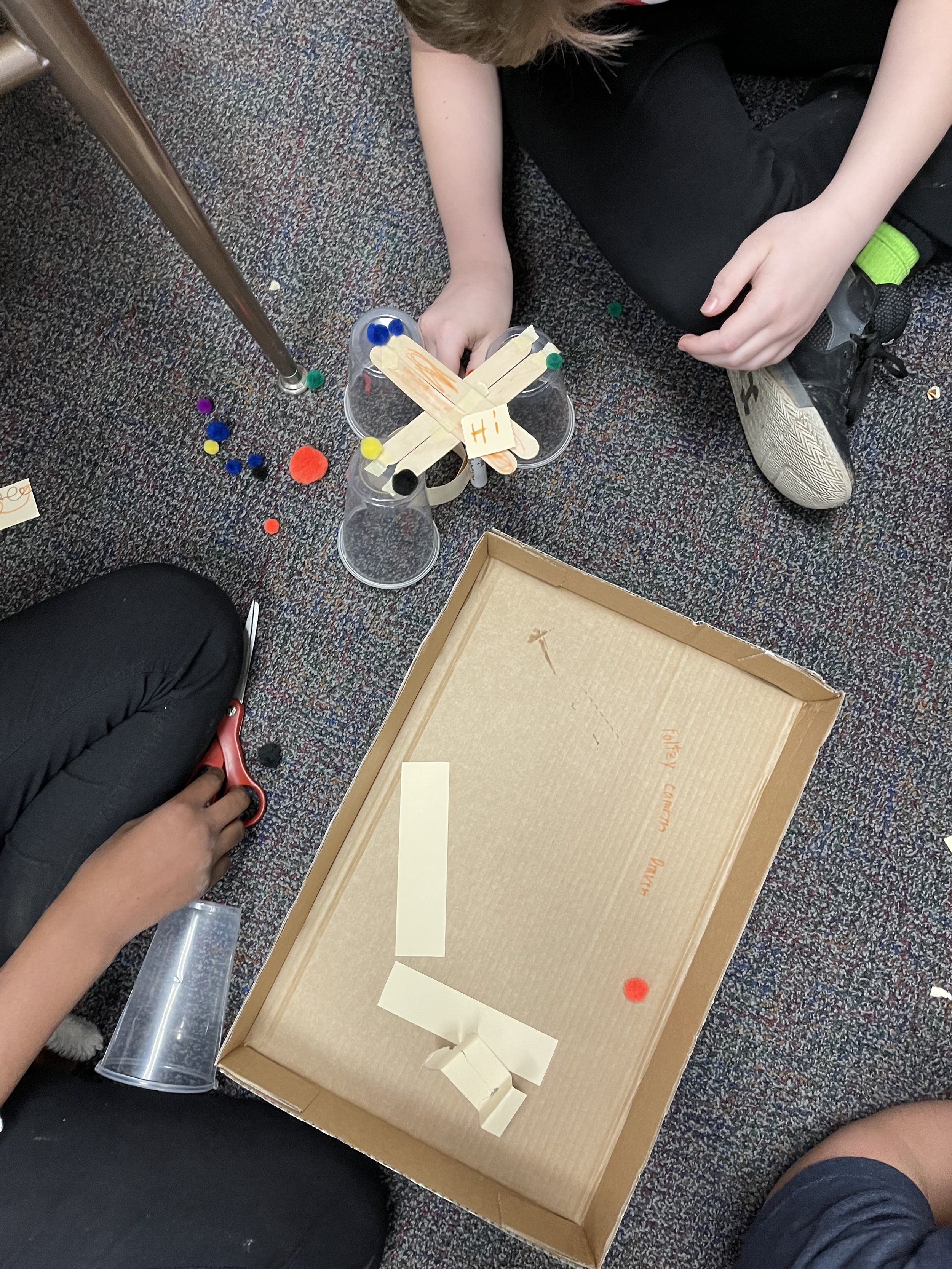
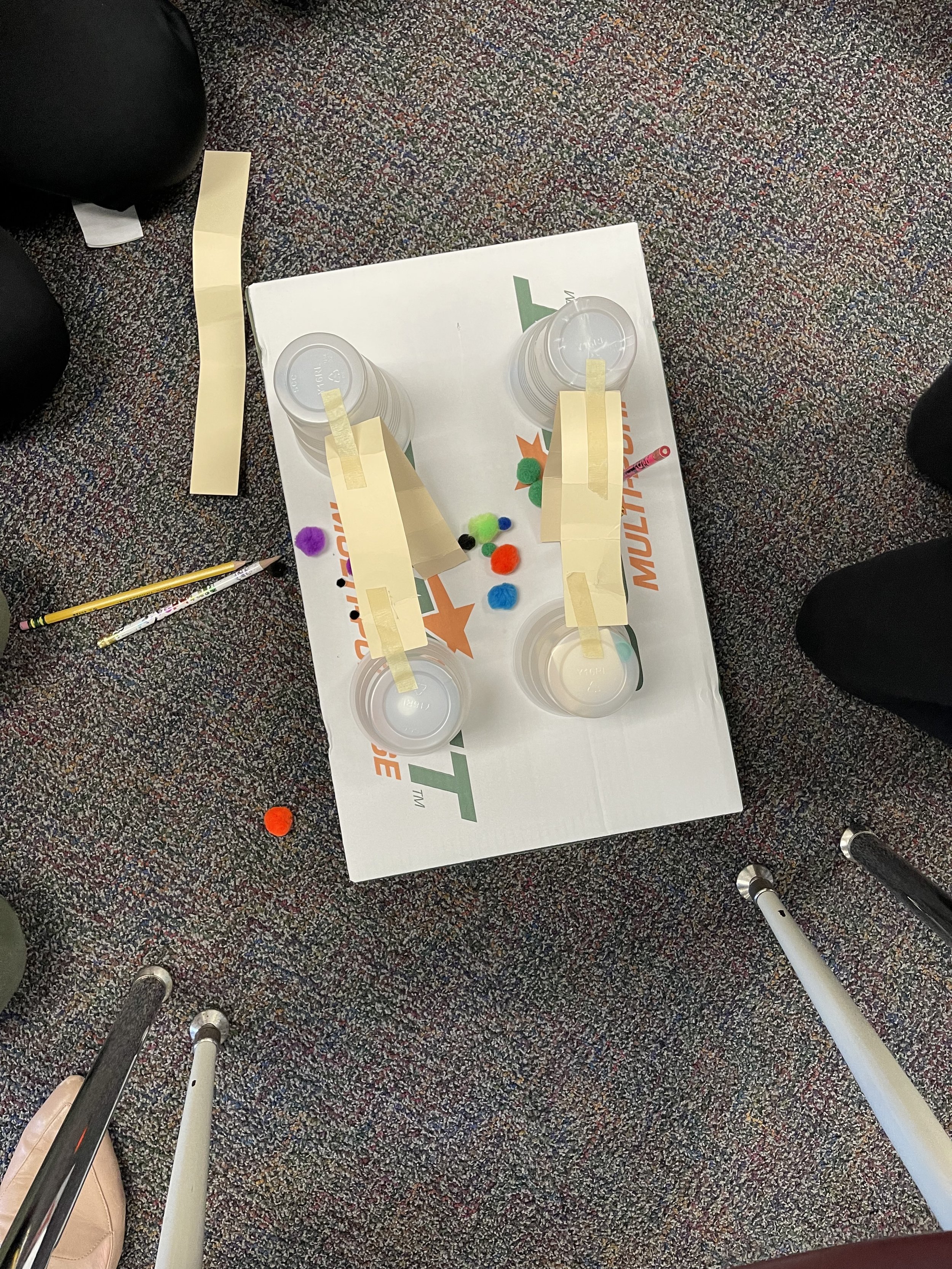
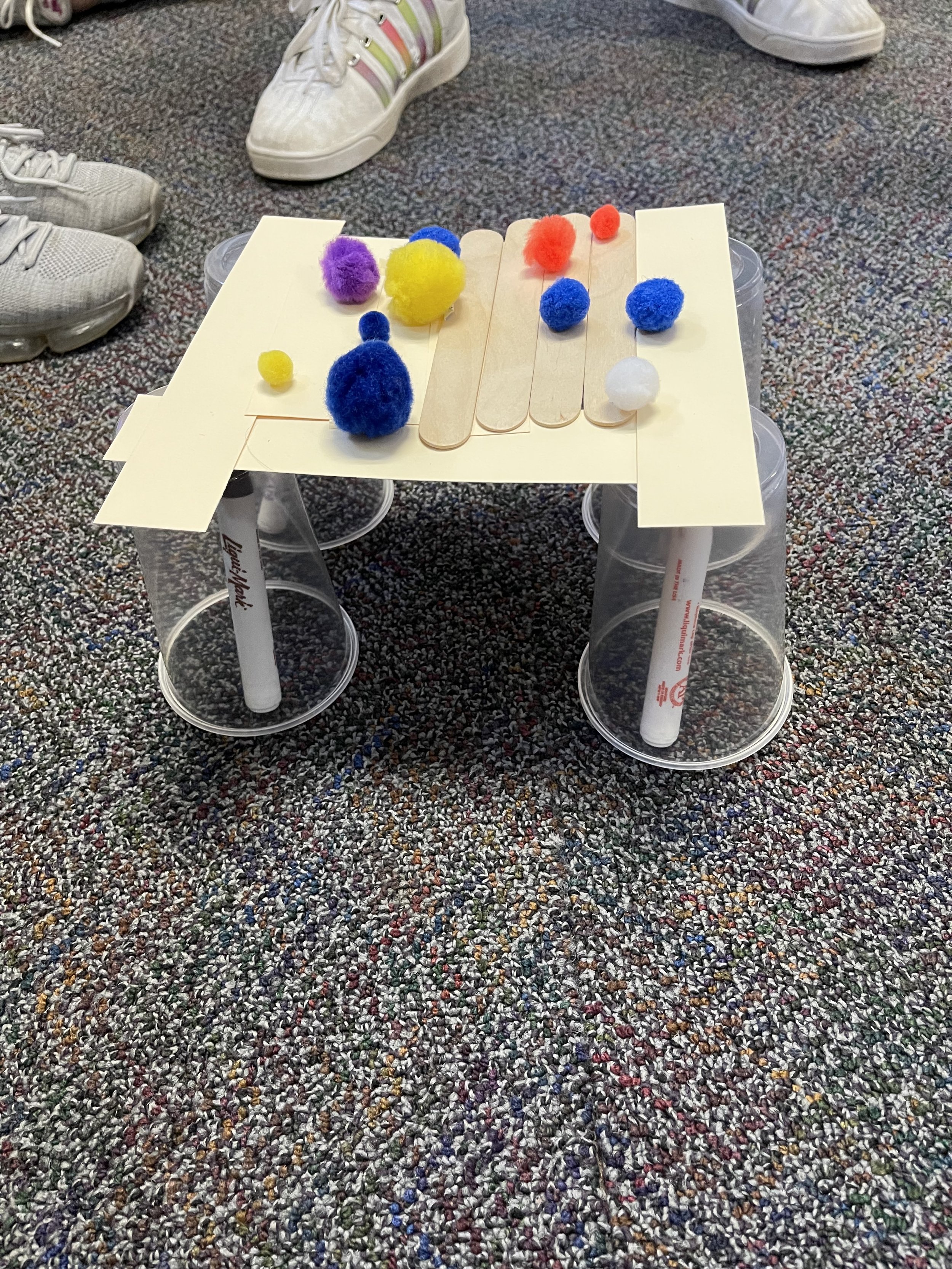
What has been one aha moment?
Kibe: There have been several aha moments throughout the activities. The go-cart activity stands out the most. When we were building the carts, we first started with bottle cap wheels. The students experimented with the idea of friction and decided that the bottle caps created too much that it affected the performance of their carts. They then created wheels using the circle paper in the FabMaker document that was cut out using the Silhouette. After testing, the students had an aha moment that the paper wheels produced less friction and therefore increased the effectiveness of their creation.
Do you have any tips for teachers getting started?
Kibe: The key to success with STEM is collaboration. We want the students to collaborate effectively, and the same should be said for educators. This was a learning experience for all involved, and it was helpful to have extra teachers and staff supporting the project. So, don’t be afraid to invite others to join in on the activity!
What's next?
Kibe: My students will now start their projects using Animation-ish. I will also continue the “Start with a Story” unit next year with my next group of 4th graders. We will continue working through STEM-based and project-based activities in our classroom so the students can discover and explore all of the different components of the discipline.
Want to learn more about Start with a Story? Email the team at info@fablevisionlearning.com
Shamrock Springs Elementary is GOING PLACES
The following blog post was written by Tyler Stott, an intern at FableVision Learning.
What started as a “crazy idea” to immerse students in the pages of a book, evolved into an interactive experience for the entire Shamrock Springs Elementary community.
Instructional Coach Jodi Dubovich (left) and Media Specialist Lori Tebbe (right)
Planning for the annual Shamrock Reads celebration, Lori Tebbe, the media specialist at the school in Westfield, Indiana and Jodi Dubovich, an instructional coach, selected a book that truly encompassed the 4Cs.
“We chose ‘Going Places’ by Peter and Paul Reynolds (this year) because this book promotes critical thinking, communication skills, collaboration, and creativity,” Lori explained. Then, using a bit of creativity and communication - the two connected the dots with FableVision to get permission to use the pages from the book and everything changed from that moment.
“The biggest aha moment for us was realizing that big things are possible and that came true when within a day we got a response from Jane Reynolds,” Lori and Jodi shared. “We had this crazy idea to immerse the students in this book walk but never thought we would hear back from FableVision let alone get permission to use their book in this way. Our aha moment was realizing that there are people out there who want to support teachers and students in big ways… The world is more connected than we ever imagined.”
The Shamrock Reads program included a storywalk, skits featuring Maya and Raphael, a community night, and a video message from Peter H, Reynolds.
“Paul and I were so excited when we heard that Shamrock Springs Elementary was not just reading our book, the whole school, but activating the book, bringing it to life in such creative ways. The message in this book is all about thinking outside of the box and collaborating with each other to solve problems and make this world a better place,” Peter shared in his video message.
We connected with Lori and Joidi to learn more about the reading program and their school.
Can you share a bit about your school, how are you so fortunate to work in such a creative space?
“We are fortunate to live in a community where education is highly valued and supported by the community and parents. When teachers have ideas and ways to enrich the learning experience for their students; administration, PTOs and other community sponsors always step up and offer support whether it is financial or materials for whatever we need. Shamrock Reads is a yearly program but due to Covid protocols we had to scale it back significantly. With restrictions easing up, we wanted to generate an excitement around reading and an event that would bring the whole school together. We went to the PTO and they agreed to fund our idea to make Shamrock Reads bigger and better this year. “
Can you share a bit about the skit you wrote and how the characters interacted with the characters in other books?
“Our kickoff for this year’s Shamrock Reads was an all school assembly. ‘Going Places’ was used as our theme this year to promote the 4Cs. During the skit, the main characters, Maya and Raphael, traveled around the gym and met characters from favorite picture books. The skit started off with them wanting to use their imagination and creativity on a day where they found there wasn’t much to do. They met characters that needed encouragement, a boost of confidence, problem solving and just some fun and wacky characters as well. At the end of the skit, the audience realizes they really didn’t go to all these places and meet all these characters, they had spent the day reading together and they were able to go to all these places by reading and using their vivid imaginations.”
Are you a Maya or a Raphael?
“We both have traits of each of these characters. We are very much like Maya in the beginning. We like to dream big and think of all these crazy possibilities for our students. The bigger the better. However, when a decision needs to be made, we switch to be more like Raphael and are very task oriented. So, we like to think we are a great combination of both. Also, we have a handful of Raphaels that we work with that trust our vision and help us make our crazy fun ideas a reality. Without them, we wouldn’t have been able to do this.”
What was the response from the students/community around this program?
“We transformed the hallway over one weekend. When the students and staff arrived that Monday it was so gratifying to see their reactions and amazement when walking through the experience. It made all the hard work and time worth it. We also had a community/parent night for families to experience the book. Everyone was blown away and really well attended. The response from the school and community has been amazing. Students kept wanting to take their parents through and read the book multiple times.”
What's next?
“Sleep! It inspired us to approach this program differently in the future and spread events like this throughout the year to promote creativity, imagination and reading. It brought such a jolt of energy throughout the building that we want to spread the energy and excitement throughout the year, not just for a few weeks in March. We already are in Maya mode thinking of ideas for Dot Day next year.”
The Peter H. Reynolds Storybook Academy: Inspiring Young Authors to Create Bravely
From teaching first grade to college, Marni Kay, Associate Instructor of Reading Education at the University of Central Florida’s School of Teacher Education, has been working in education for 23 years.
“I am fortunate to have the opportunity to inspire the next generation of educators,” she explains. “Each one of the Reading and Language Arts courses I teach has a ‘little kid factor,’ meaning I partner my UCF students with K-6 students in the community during our class time in a variety of ways.
Marni and her team incorporated FableVision Learning’s The Peter H. Reynolds Storybook Academy into their instruction. We recently chatted with Marni about her experiences using the online writing program. Read on to learn more!
Q: What were your goals in using Peter H. Reynolds Storybook Academy?
Marni: I teach an Elementary Language Arts methods course and as part of the course, the standards focus on teaching future teachers how to teach the writing process to K-6 students. [The Peter H. Reynolds] Storybook Academy’s focus aligns perfectly with these goals.
The modules take students from brainstorming all the way to publishing with Peter guiding writers each step of the way. One part of teaching writing well is for teachers to also see themselves as writers, so I wanted my students to experience the writing process not only as future educators, but as writers themselves.
I knew I also wanted to partner with one of the K-6 teachers, I work with in order to provide an opportunity to not only see how the modules would work with college students, but also in a K-6 classroom! I teamed up with one of my recent graduates, third grade teacher, Vicky Livorisi to try it out.
My UCF students and I started the program with Vicky Livorsi and her third graders at the end of the school year. Vicky and I met several times on Zoom to go over the modules, plan, and brainstorm what a virtual partnership might look like. Over the course of 5 weeks, Vicky led her students through the Storybook Academy modules and we came up with a few times that my students and I could support her writers throughout the process.
During these virtual visits, my students and I were able to engage in writing conferences with Vicky’s third grade writers via Zoom. We were so excited to hear her amazing students share their ideas, drafts, and published stories with their “UCF Writing Buddies.”
As I reflect on the experience, I appreciate that my UCF students were not only able to engage as writers (writing their own stories), but were also able to experience the writing process through the lens of a third grader.
Vicki shared: “My kiddos have loved the program and they think it’s so wonderful to hear from Peter in his videos as well! They have become so motivated to brainstorm ideas for potential titles and write!”
And her classroom was abuzz with excitement. Her students shared":
“It gives me an excuse to draw during class time. I also liked making up my own characters and using my imagination.”
“I enjoy Storybook Academy because it helps me learn how to become an author.”
“If you have a lot of imagination like I do, you can express it in a book and read it over and over again!”
Q: What was your favorite part?
Marni: What I love most was that students (at all levels) were able to learn from Peter H. Reynolds and his two decades worth of knowledge and support. I appreciated the connections between his published books (which kids and teachers LOVE), the way he encourages students to write what they know, and the practical strategies that he includes to help along the way, like the one-minute story.
Students from third grade to college were all able to write and publish their own book! The published books included stories about pets, friendship, a cookbook, a how-to origami book, and a few students even chose to collaborate on their creative stories, as well!!!!
Marni’s students at the University of Central Florida also had high praise for the program.
“Storybook Academy, I think is genius because I’ve always wanted to write a story, but never gathered the motivation to go through with it. To have a class and little buddies to do it with you, makes it inspiring and a great learning/motivational tool.”
“Storybook Academy is a fun way to create books/stories. I appreciate the small goals throughout to make it feel attainable. The videos throughout about the writing process are an awesome tool! I can’t wait to try this out in my future classroom!”
Q: What does Create Bravely mean to you?
Marni: Create Bravely means dreaming big, thinking outside of the box, and trying new things. For me, this looks like connecting the dots by designing cross-curricular content units tied to children’s literature, creating authentic learning experiences for my students and K-6 kids in the community, and providing real world learning opportunities that encourage my students to dream big, too.
Q: What’s next?
Marni: We are looking forward to participating in Dot Day 2021!!! For the past two years we have participated BIG both in person and last year with a virtual event that included a special Dot Day themed Bitmoji Classroom. This year, I am also planning to take some inspiration from Storybook Academy and ask my students to write a one-minute story highlighting how they will make their mark in education! I can’t wait to see what we come up with next!
Curious about how to use the Peter H. Reynolds Storybook Academy in your classroom? Click here to learn more or email us at info@fablevisionlearning.com.
Be You After-School Program at Jaffrey-Rindge School District Explores Creativity and Making
The team at FableVision Learning just wrapped up a fantastic year working with the with Jaffrey-Rindge Cooperative School District after-school program.
We worked with the New Hampshire school district to implement an exciting after-school program for K - 8/9 students that supported personal and academic success through the use FableVision’s creative tools and engaging projects.
Using custom curriculum focused on social-emotional learning (SEL) along with tools like Animation-ish, FabMaker Studio and resources from the The Peter H. Reynolds Storybook Academy the students explored their creativity while sharing their voice. To wrap up the program, FableVision hosted a virtual. end-of-year celebration of student work with special guests Paul and Peter H. Reynolds.
Here are some highlights:
Engineering and Design with FabMaker Studio
From intricate pop-ups to 3D robot Batman, students explored design engineering and paper fabrication.
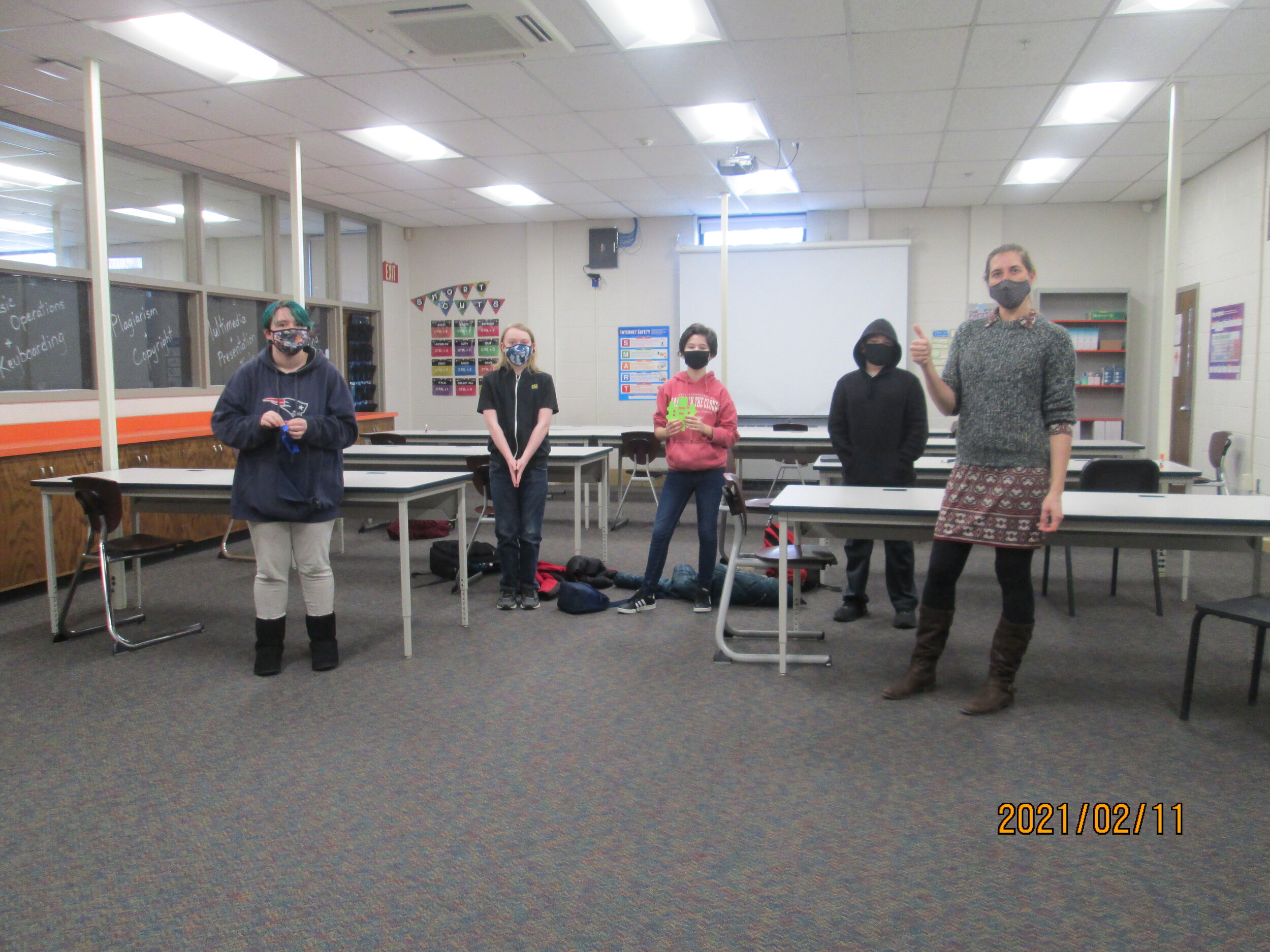

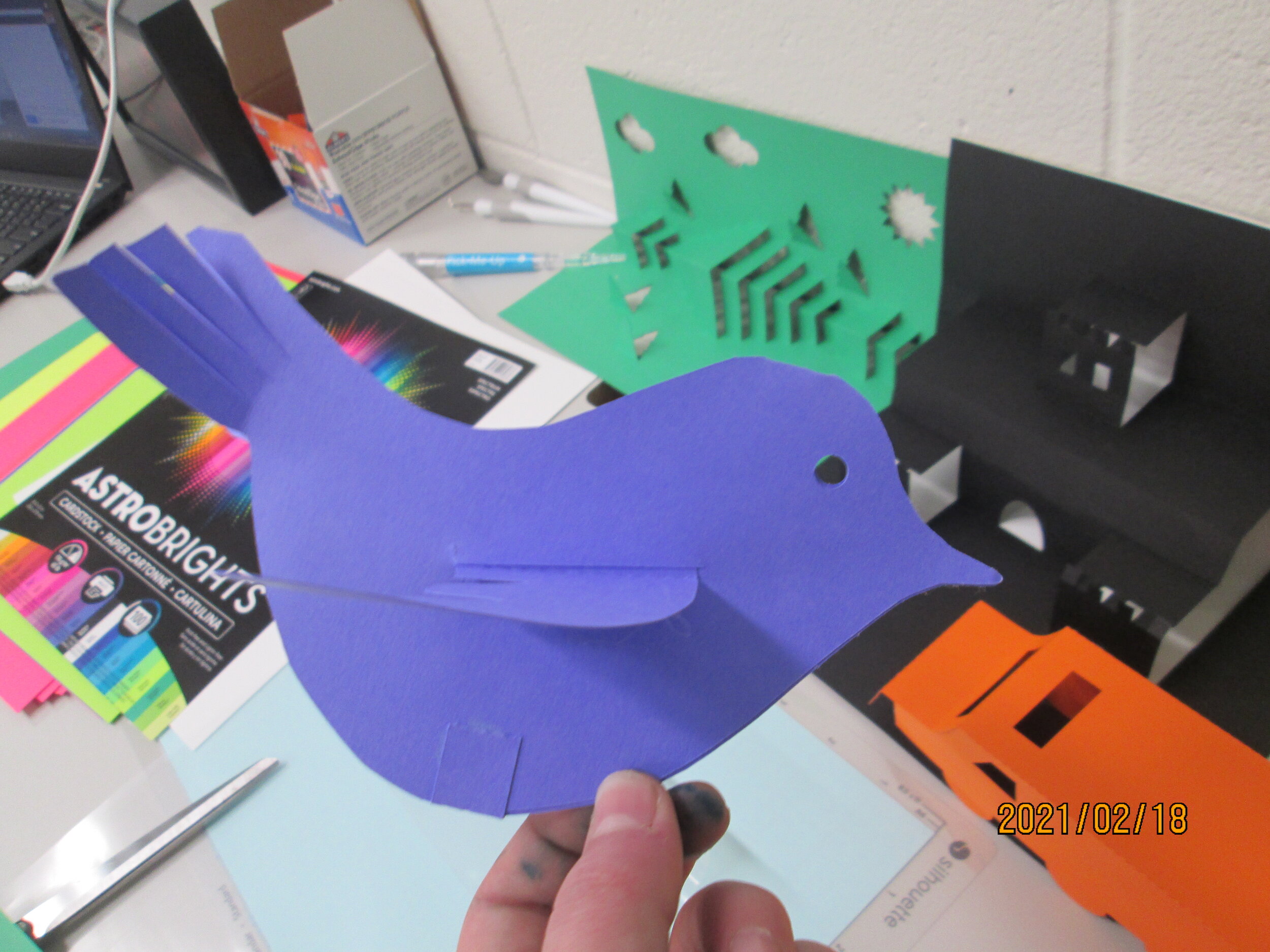
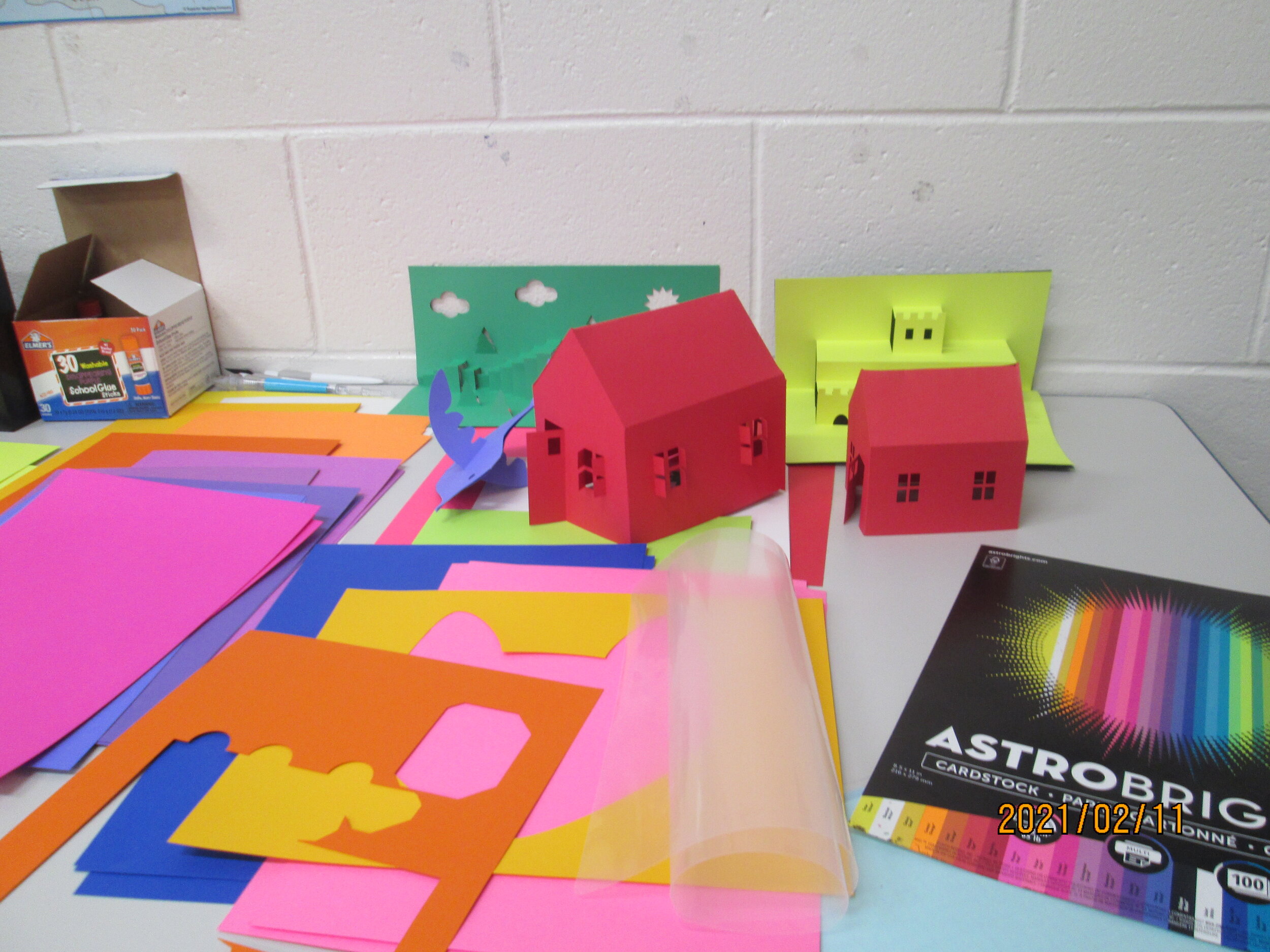

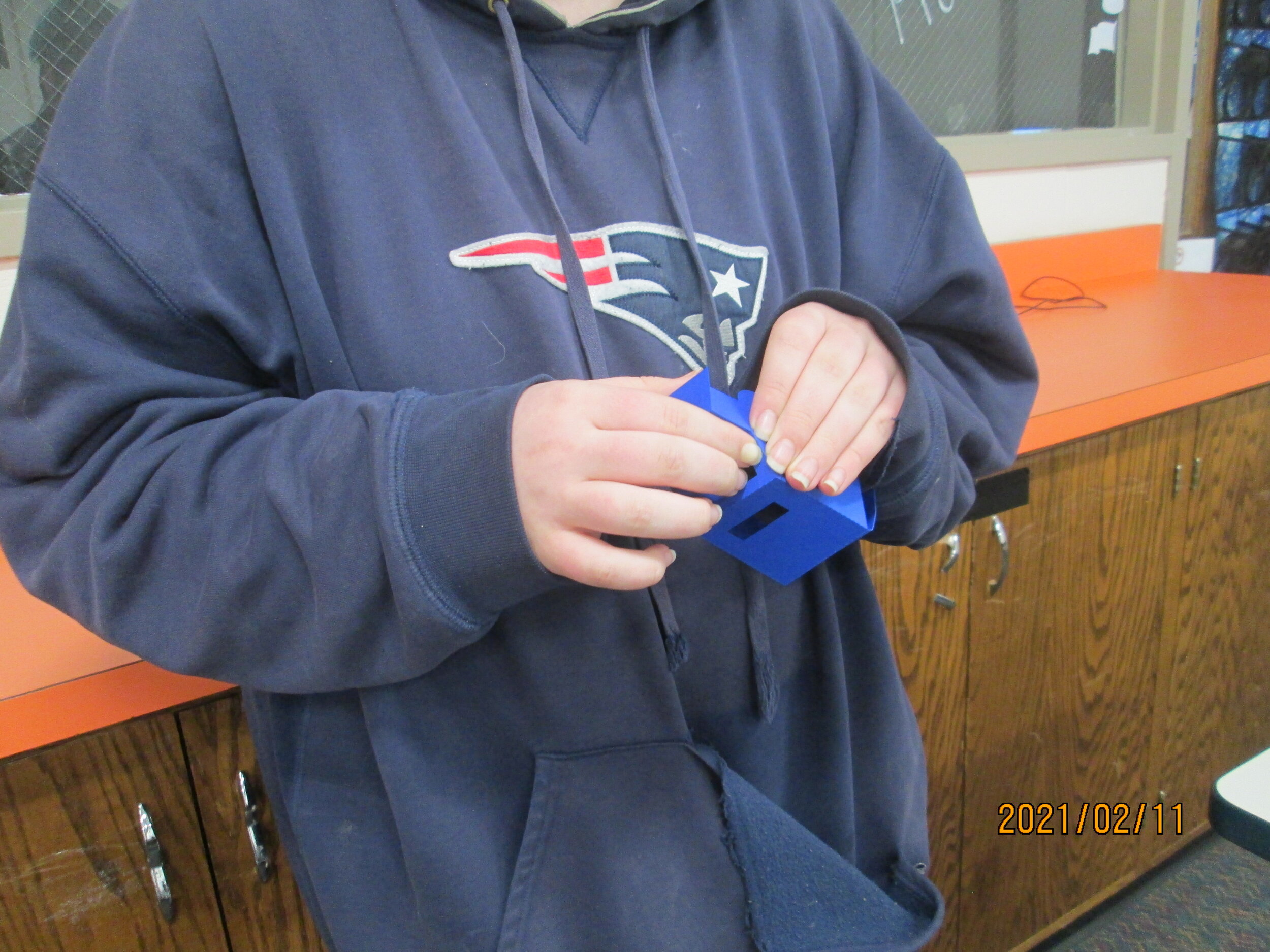
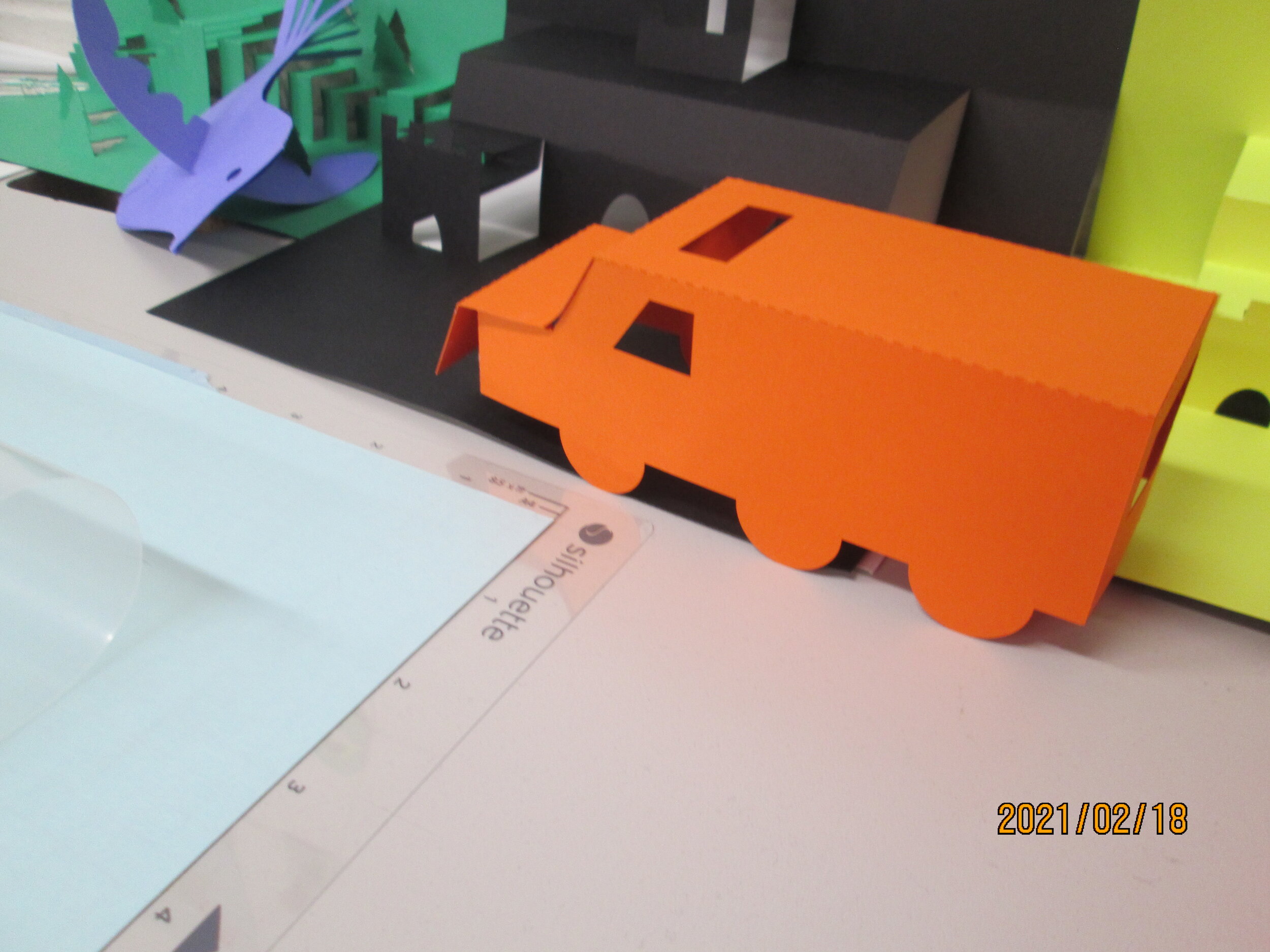
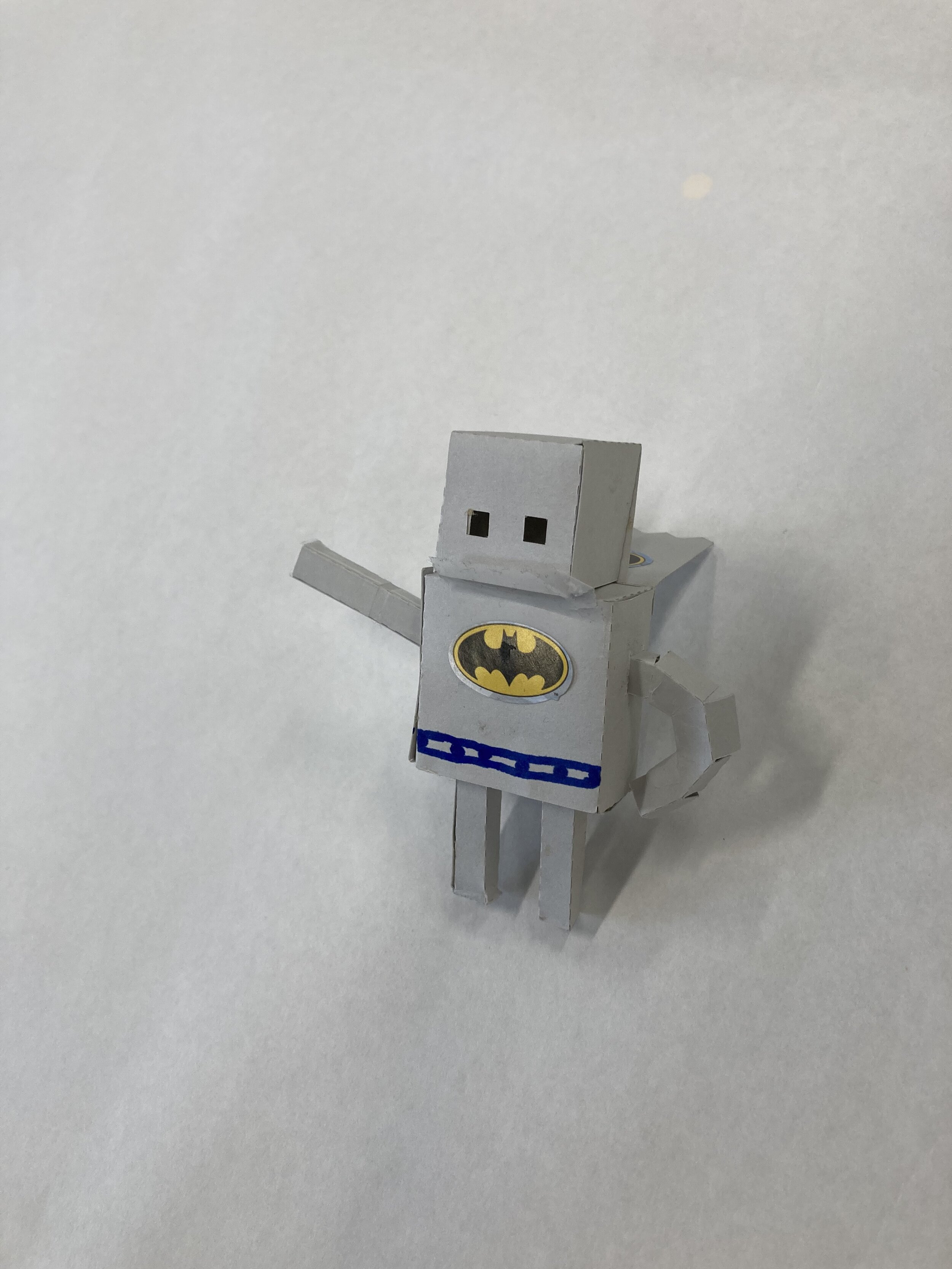
Animation-ish
Students learned the basics of animation and explored different levels of Animation-ish to create their final projects (seen above in gif form).
Are you looking to bring custom programs and curriculum to your school, after-school or camp classes? contact us at info@fablevisionlearning.com to find out more!
FabMaker Spotlight: Literature, Robots, Designing, Oh My!
This FabMaker Studio Spotlight is from Susan Spigelmire, a kindergarten teacher at Harvest Valley Elementary in California. She connected the dots with FableVision Learning through the Carly and Adam Elementary STEM Teachers Club.
It all started with a STEM literacy unit on the “Three Billy Goats Gruff” by Paul Galdone. A team of teachers and I got together and wrote a lesson in which Kindergarten students would build a bridge that the three goats (using three different sized blocks) would go over and under which a troll would fit.
We incorporated many Common Core State Standards, such as speaking and listening, writing, positional words, and geometry standards related to the 3D shapes used in the bridge design. We also incorporated NGSS standards in this lesson. Students had to sketch a design of their bridge and come up with a material list. Then as a group, they built the bridge, tested it with the goats, and made changes when necessary.
This lesson was a hit with our students. However, after attending Wonder Workshops webinars, I wanted to incorporate their Dash and Dot robots. Dot became the troll and Dash the Billy Goats. With this change, students need to construct a bridge that will be strong enough to support Dash. The robot is coded to go up, across, and back down the other side. Dot, the troll, has to fit under the bridge and be coded to talk when dash crosses the bridge. This lesson encourages students to think about designing the bridge and surrounding setting details. It also gets them to record their own sounds into Dot and Dash using language from the story and encourages them to retell the story in sequential order. This lesson will take a few days as there are a lot of details involved.
During my online research of STEM, I found Carly and Adam and their Facebook page “Elementary STEM Teachers Club,” where I attended a Facebook Live with Andrea Calvin. During this Facebook event, I learned about the fabulous Fabmaker Studio. So of course I signed up, bought a new digital craft cutter, and got busy designing.
My first designs were basic, but as I played with FabMaker Studio, my designs improved, including my goat and troll. From there I was inspired to design more storybook characters such as the three little pigs and the wolf, and the three bears.
I am currently writing lesson plans for those fairy tales. As my students get better at designing, they will use FabMaker Studio to design characters and setting details from other popular stories we read in class.
For more information, contact us at info@fablevisionlearning.com. We invite you to join the conversation on Facebook the FabMaker Teacher Group.



